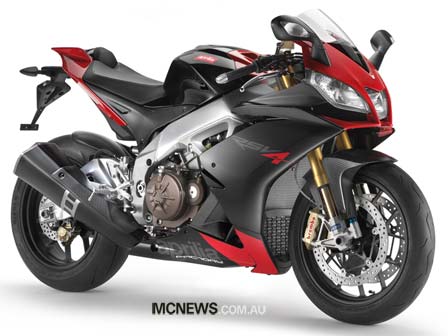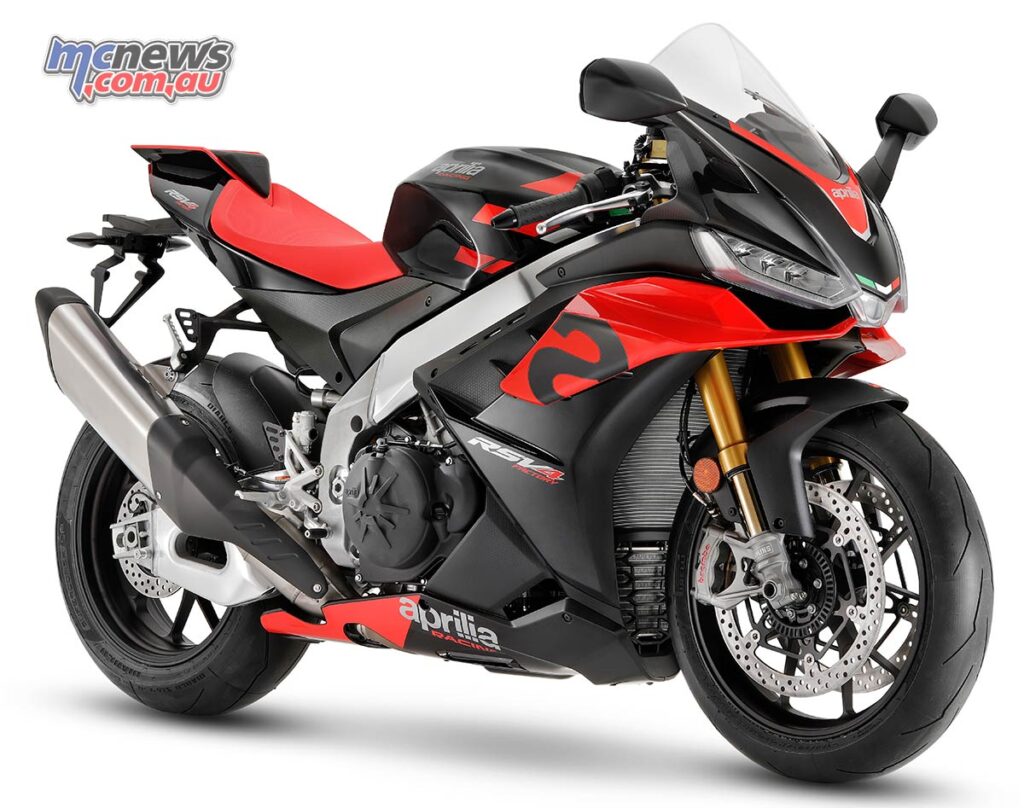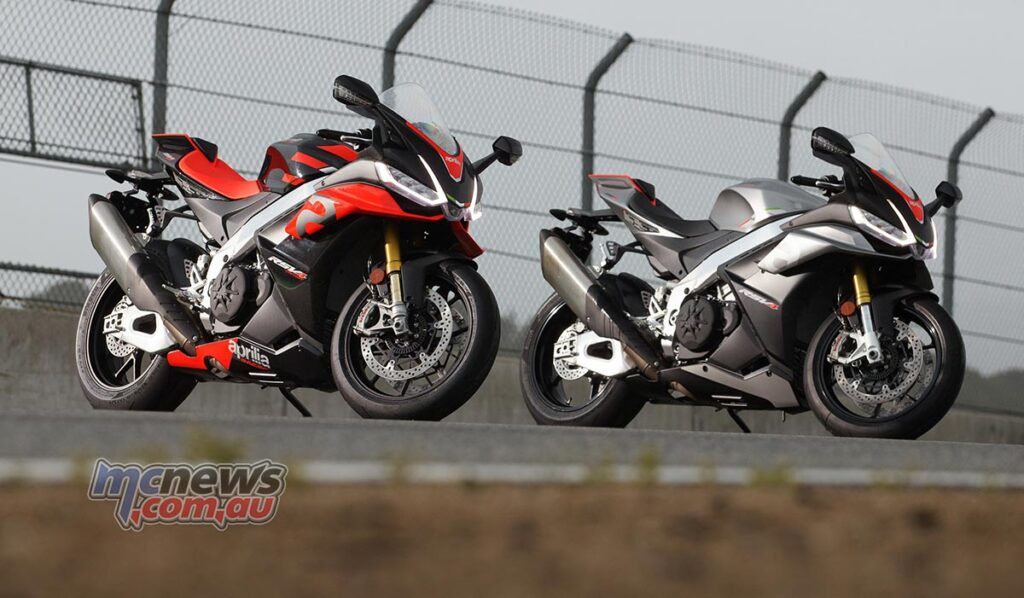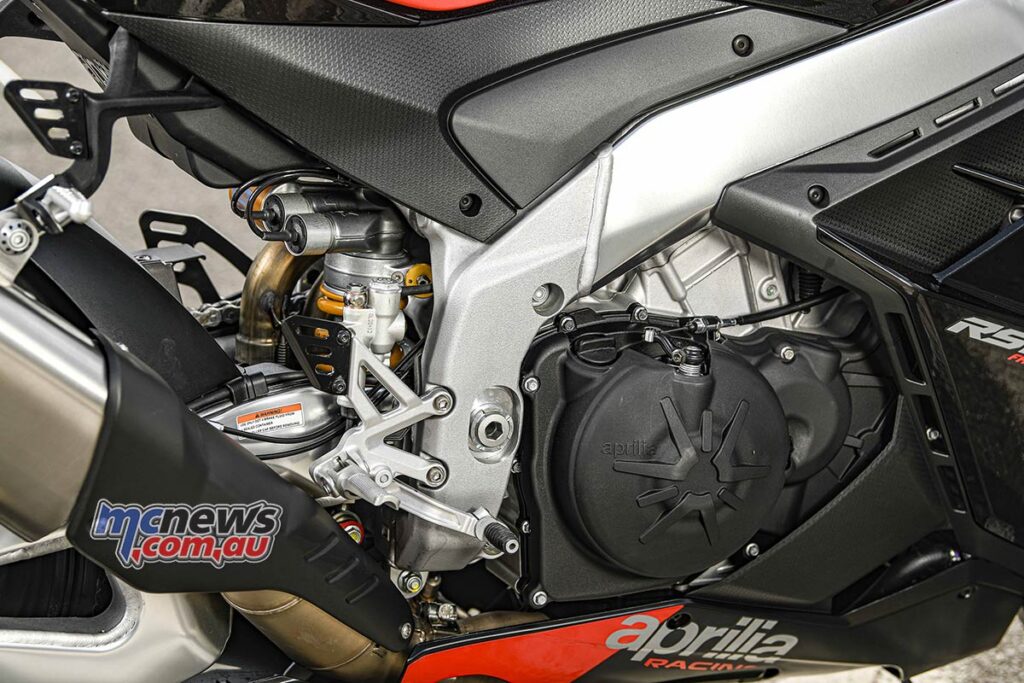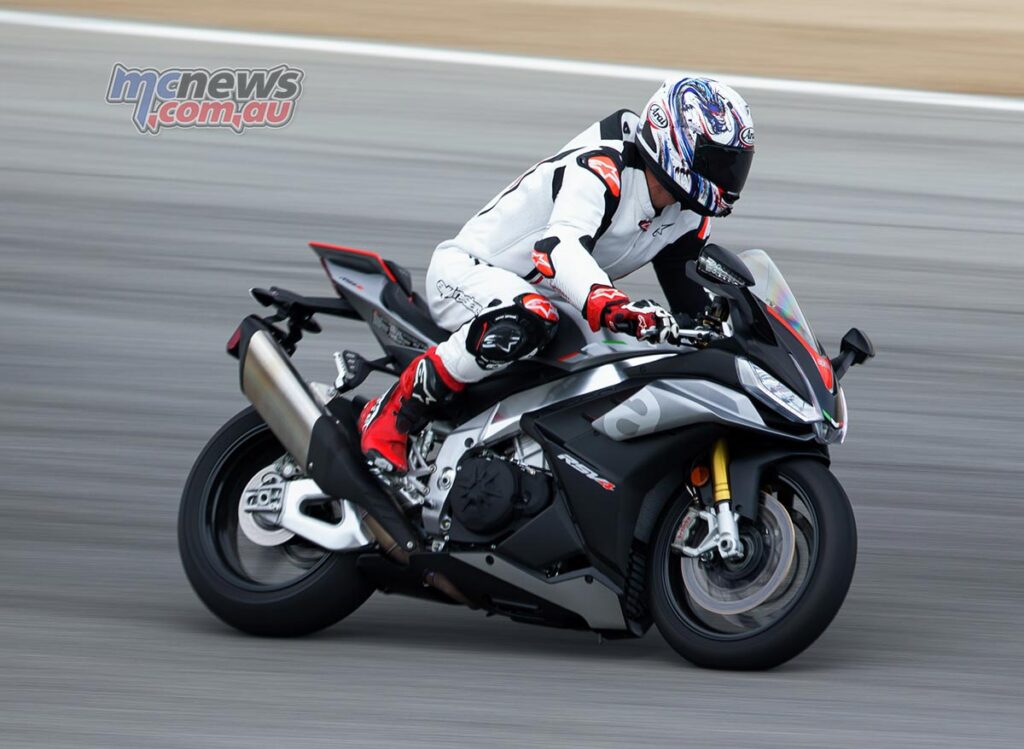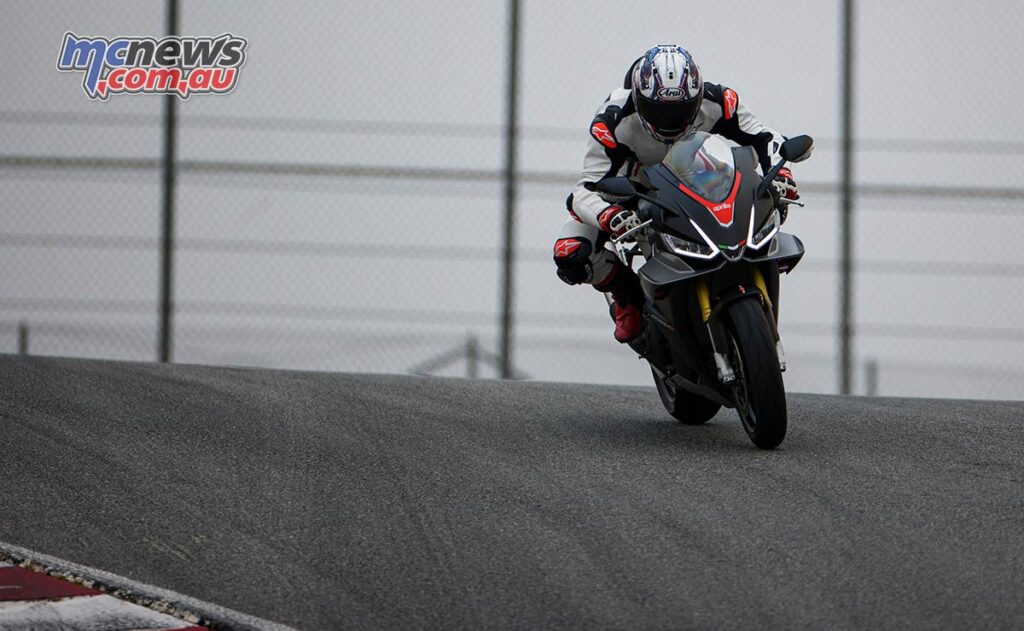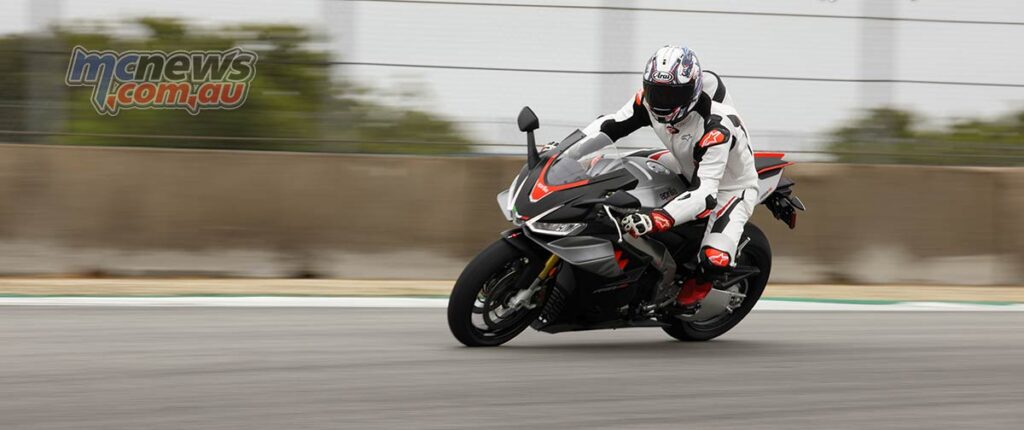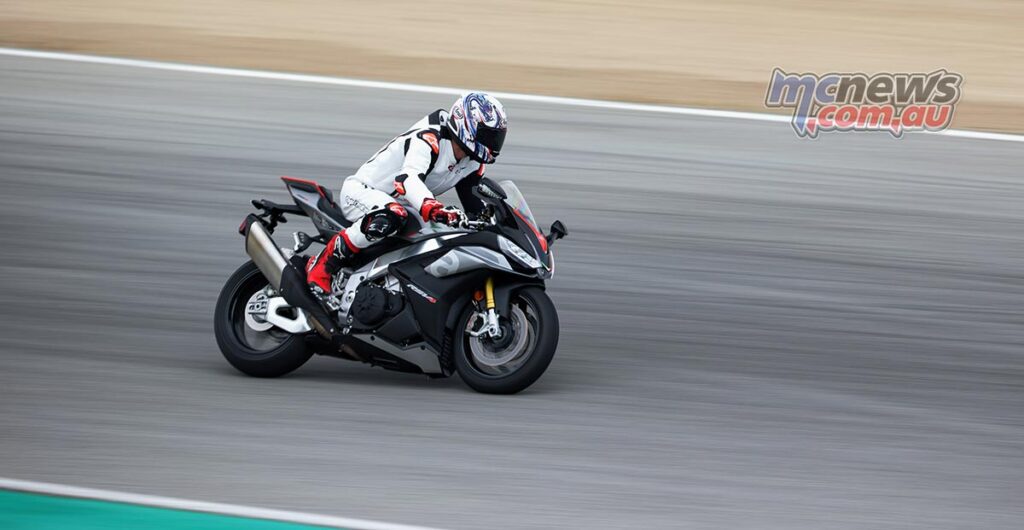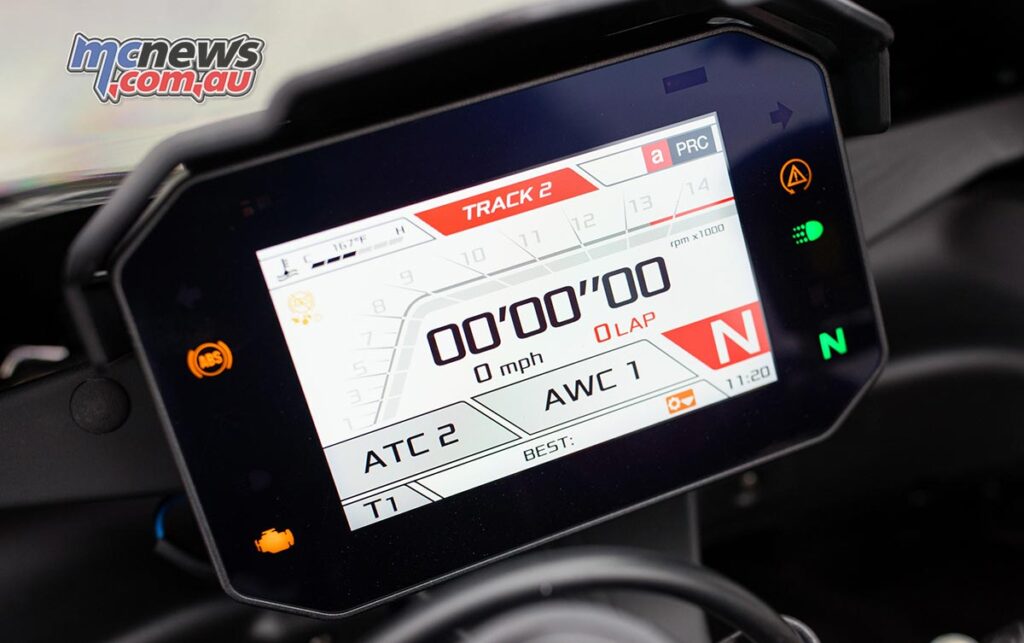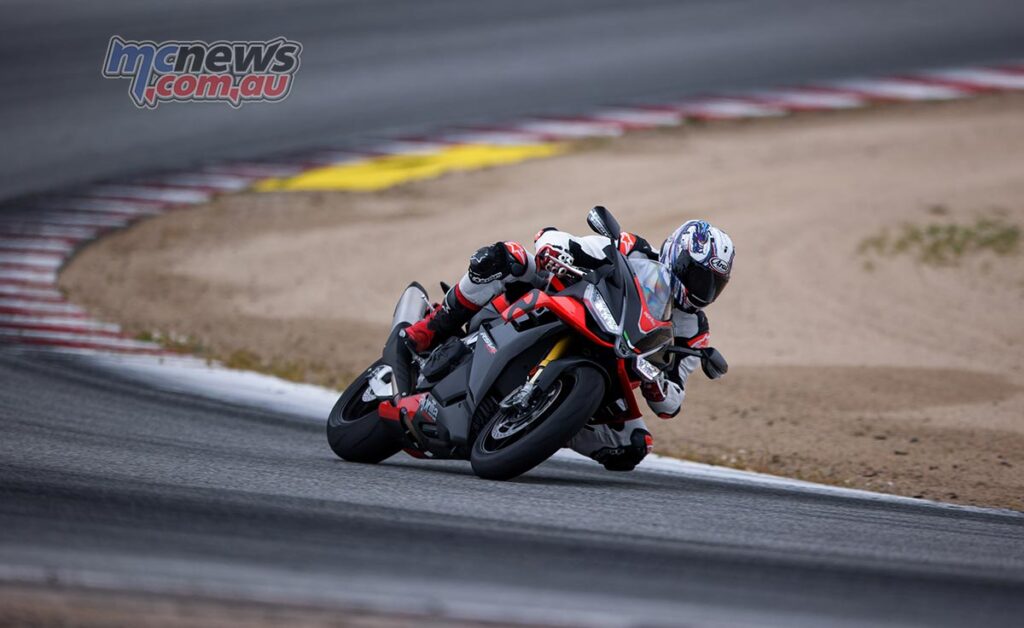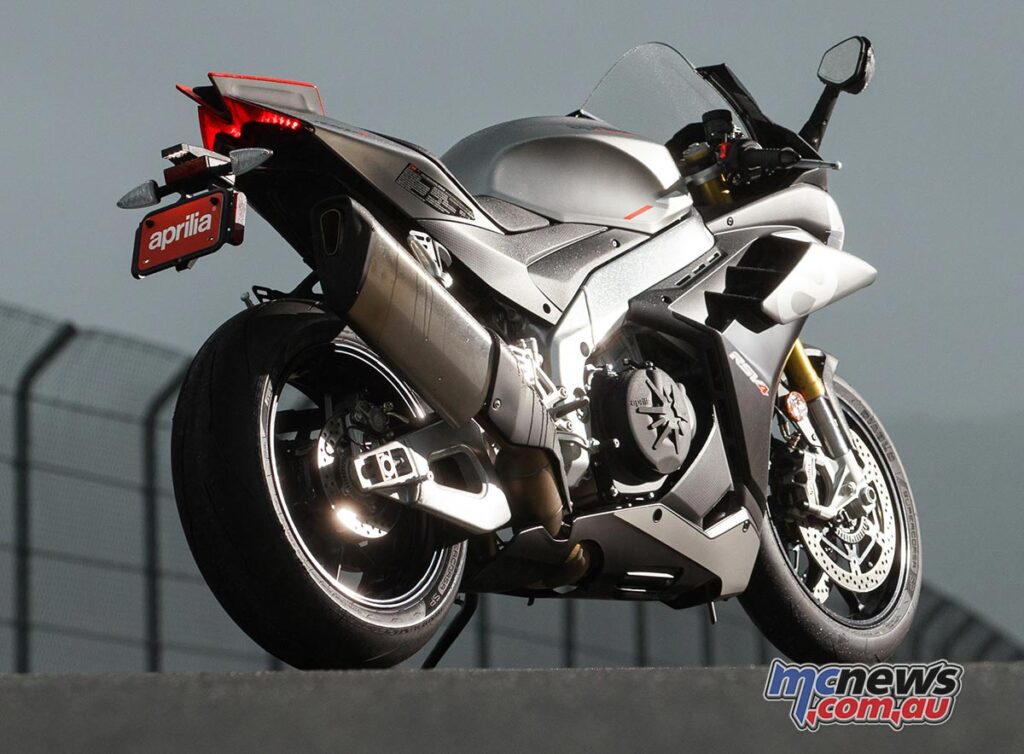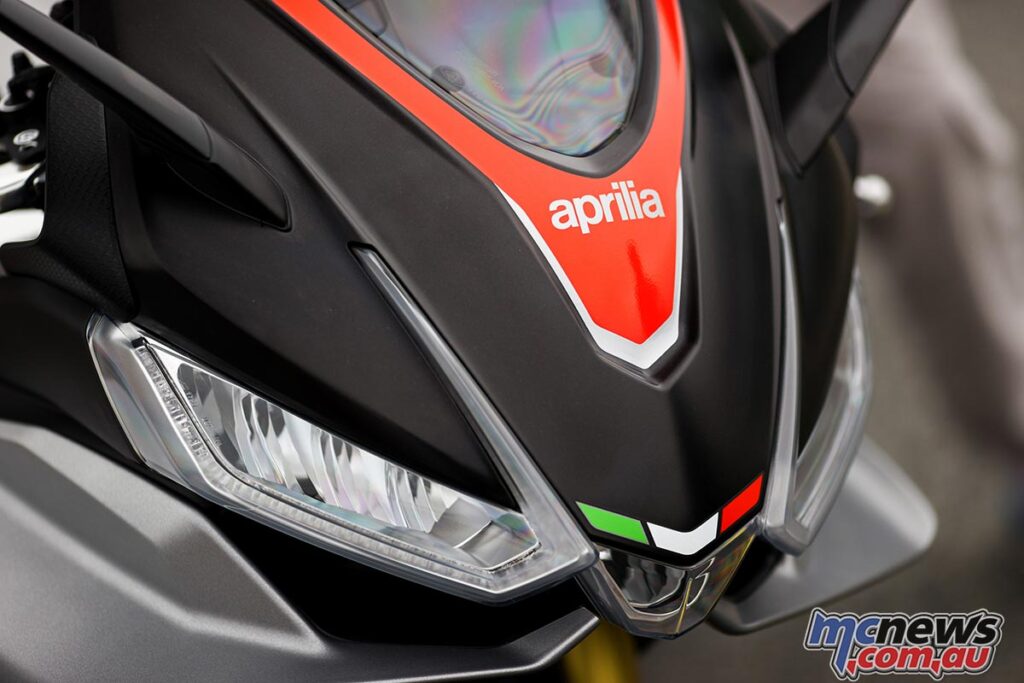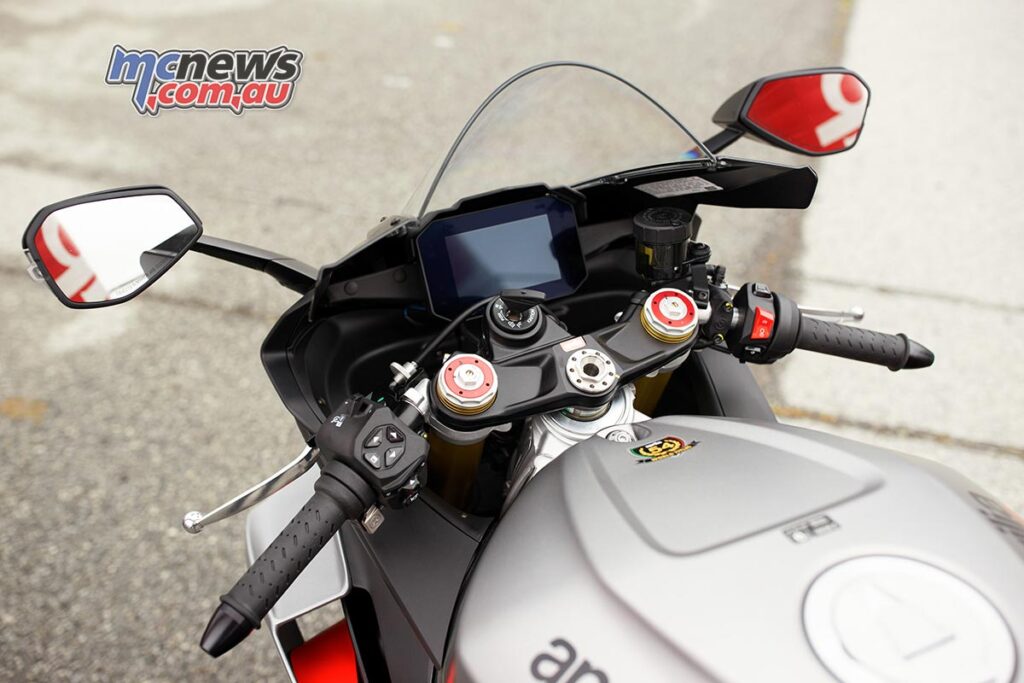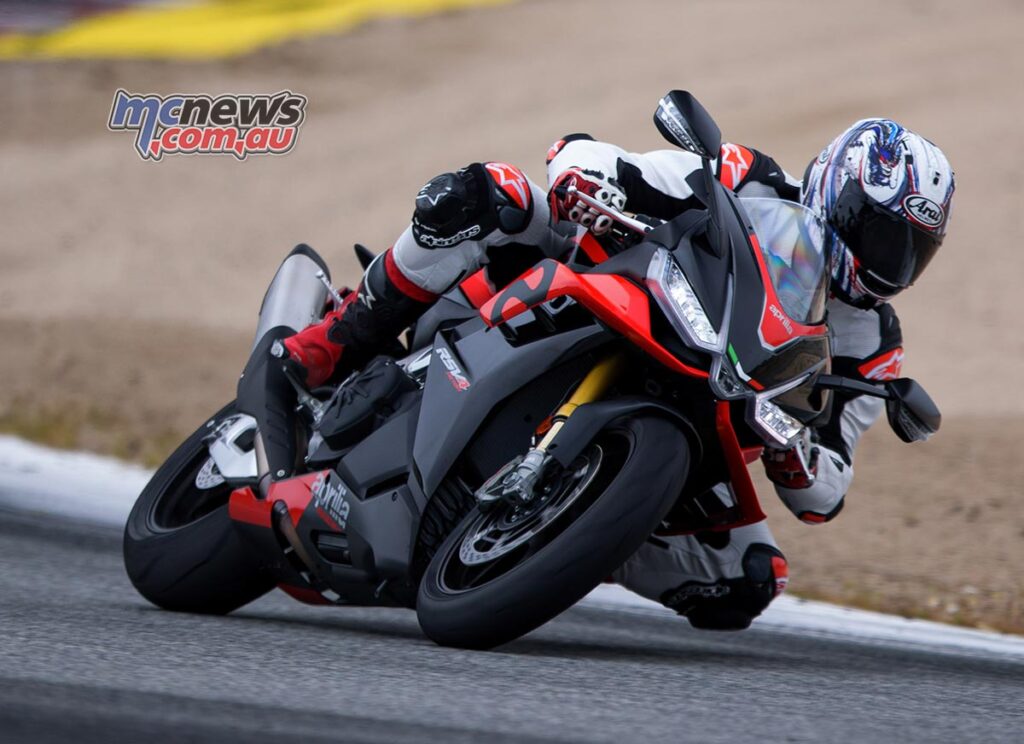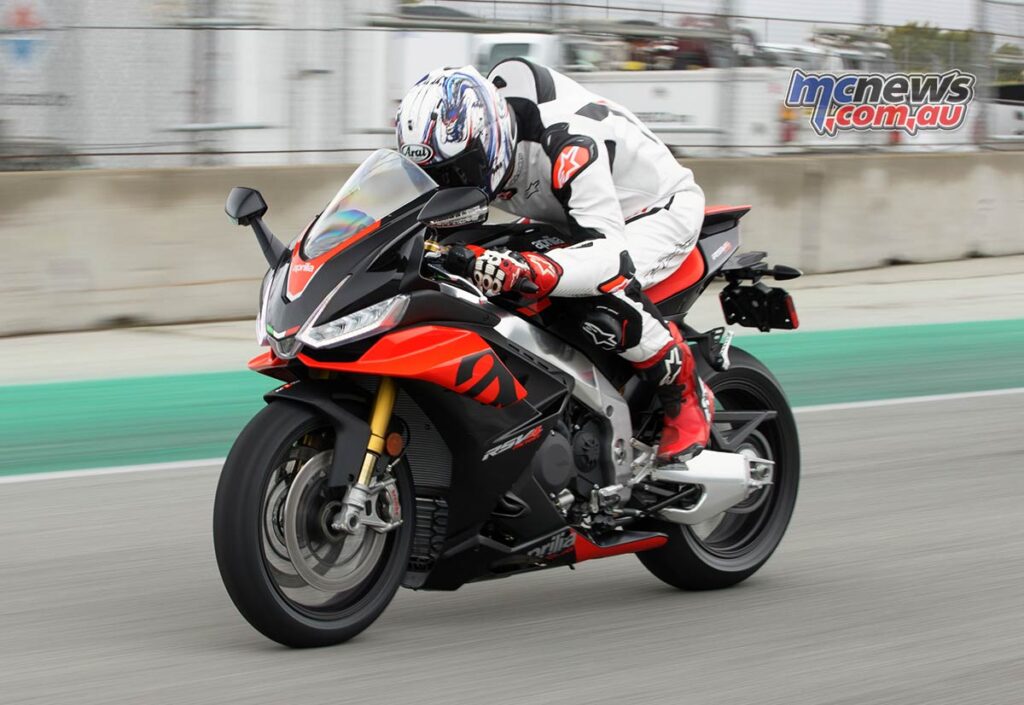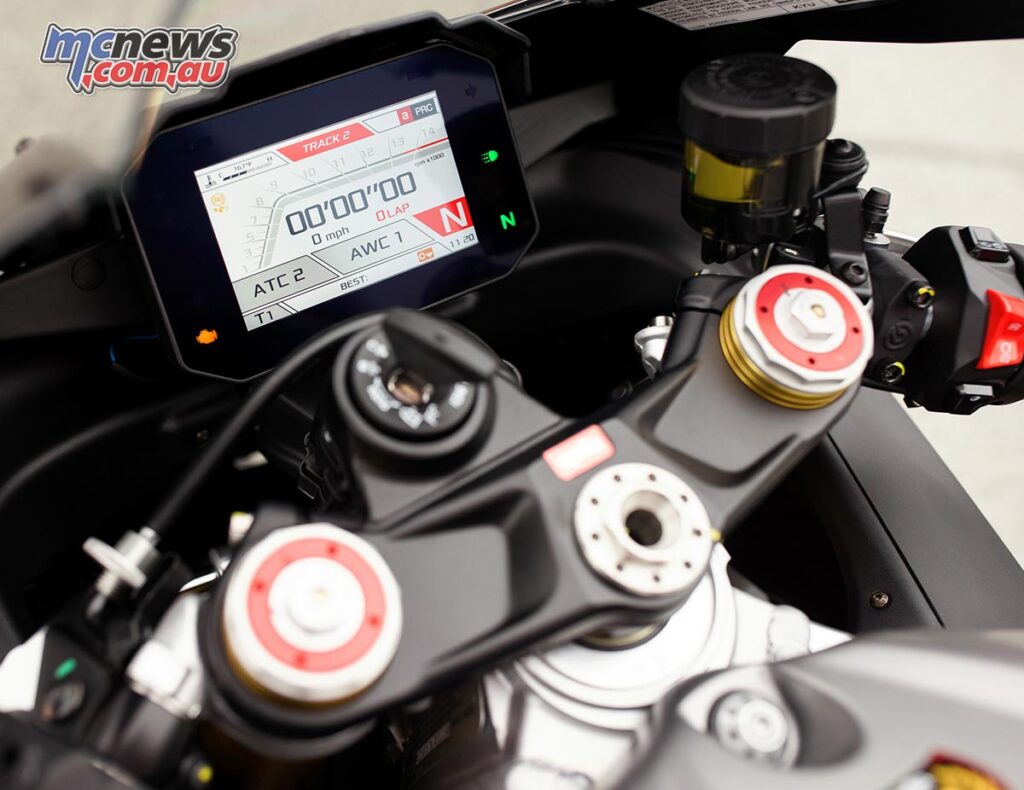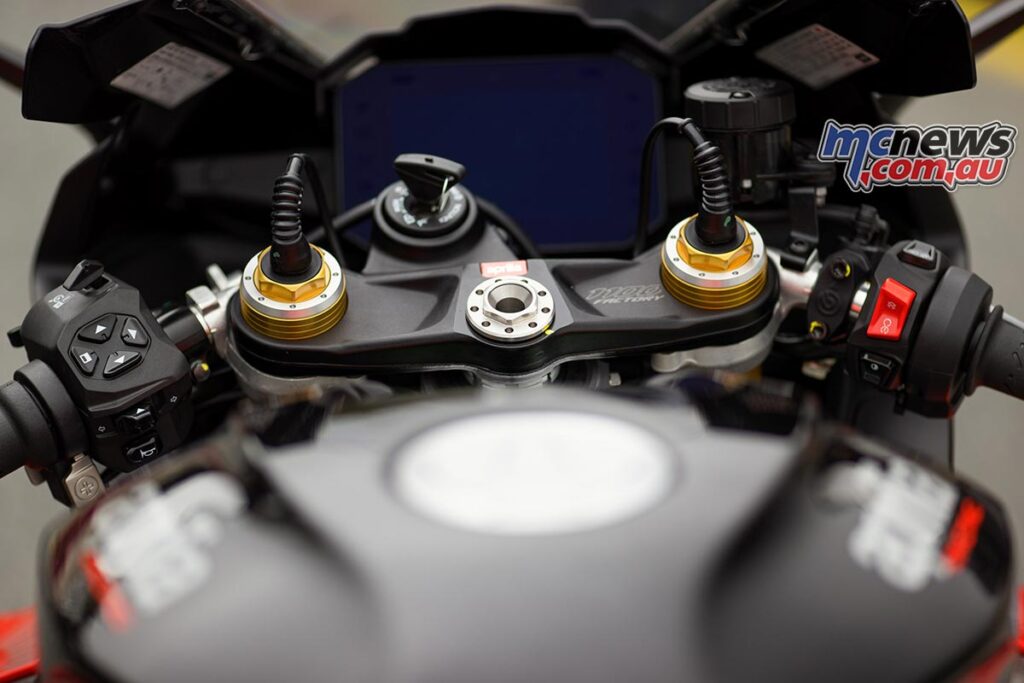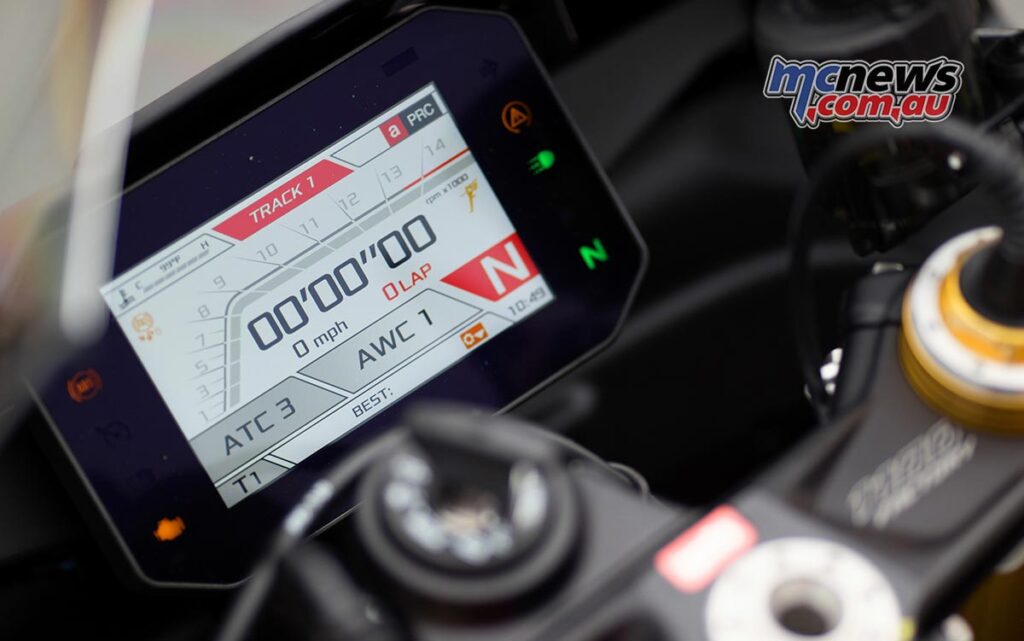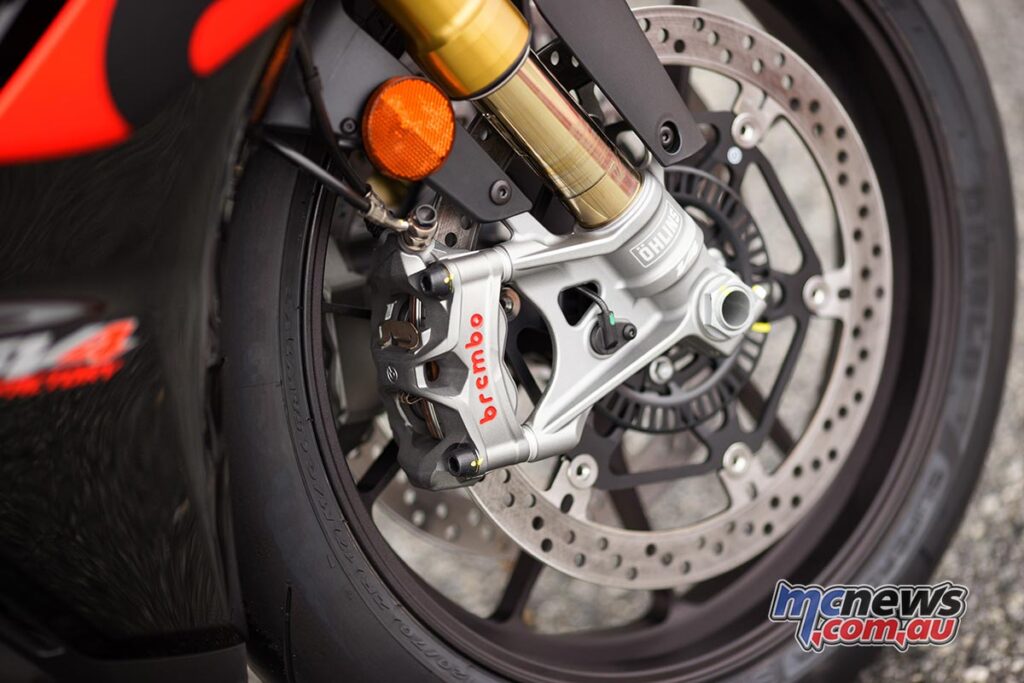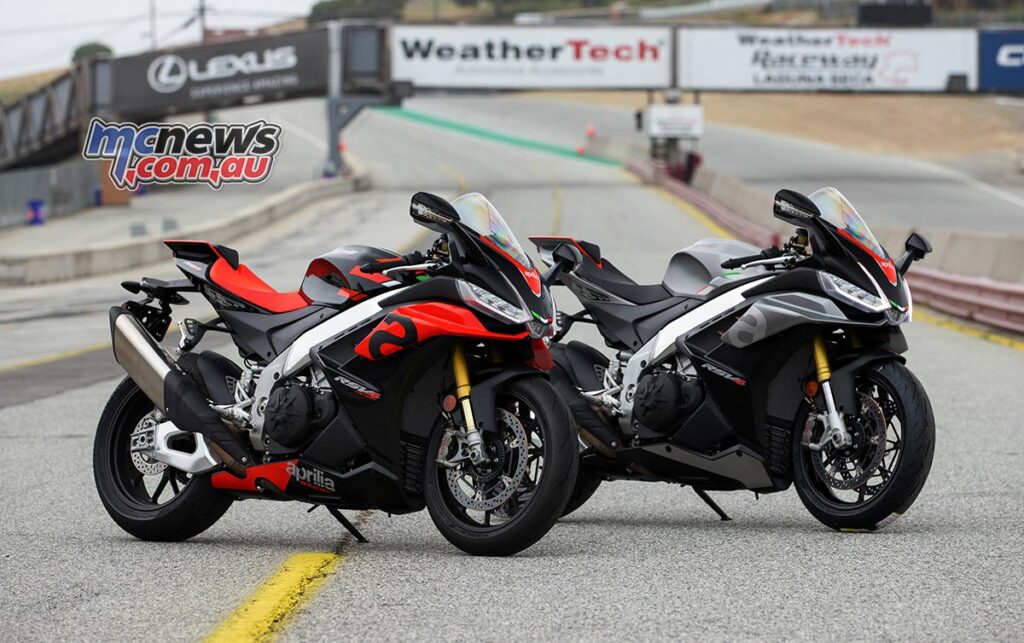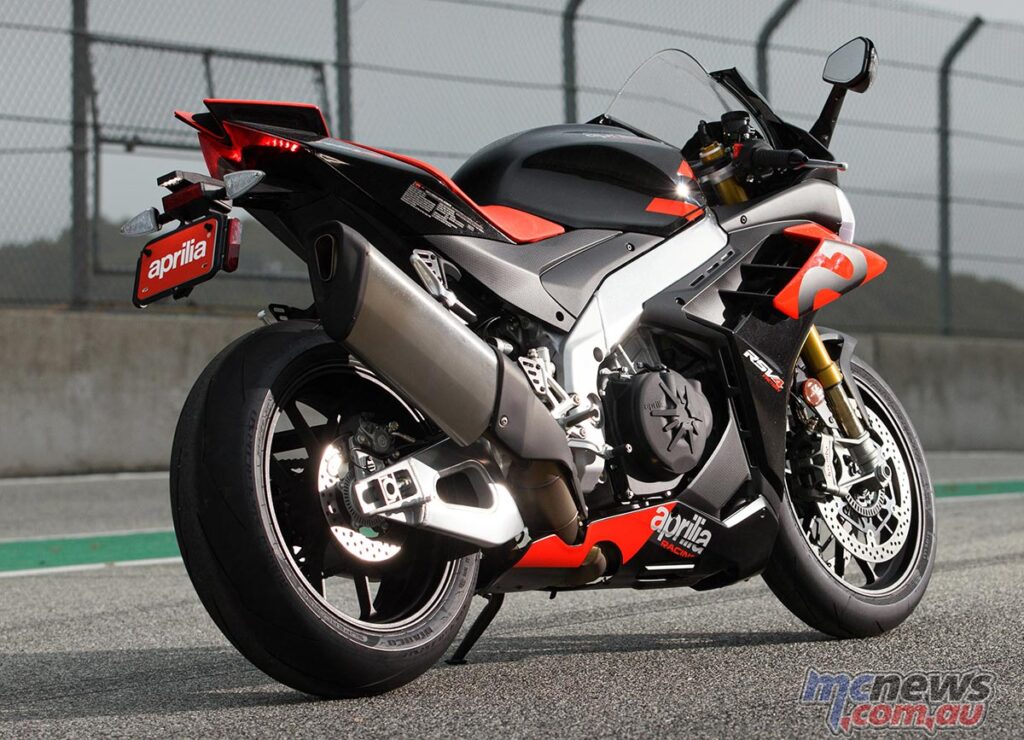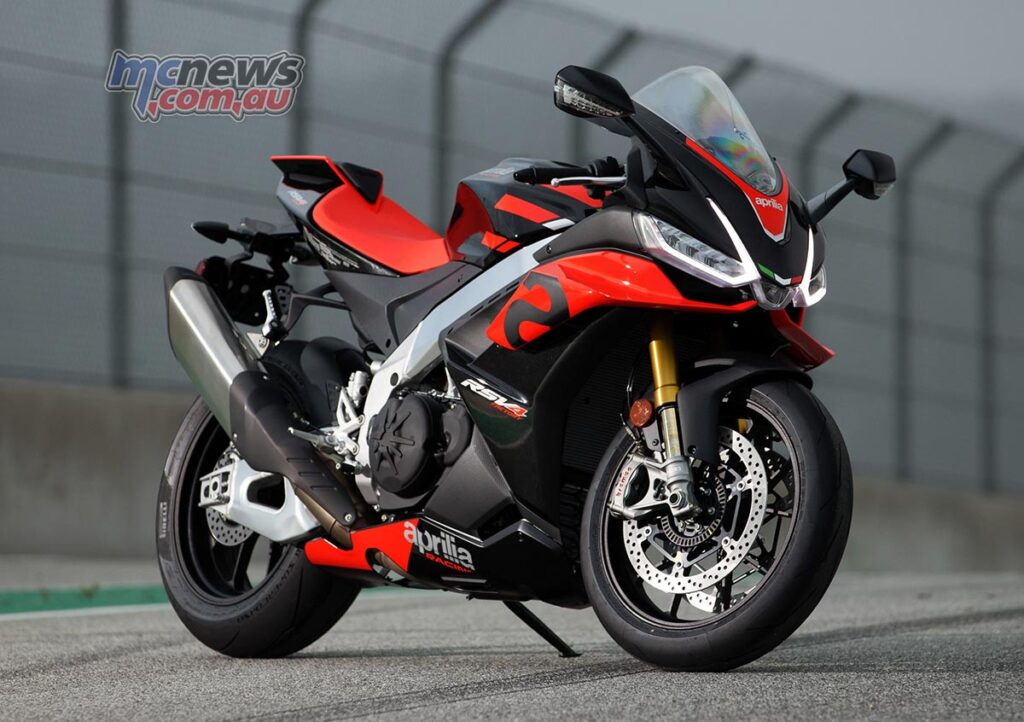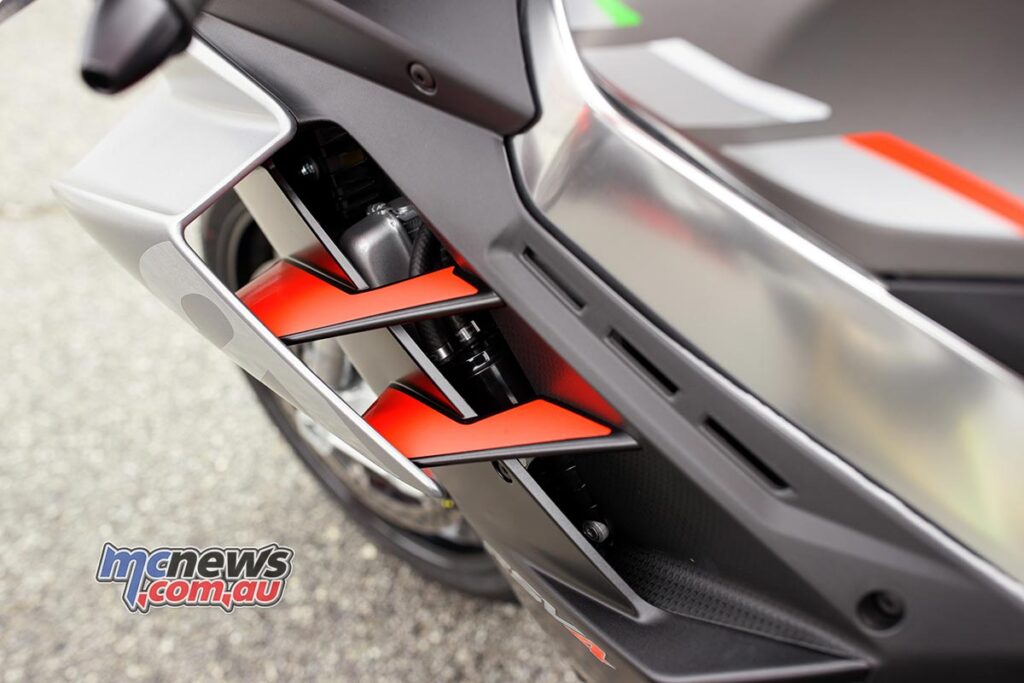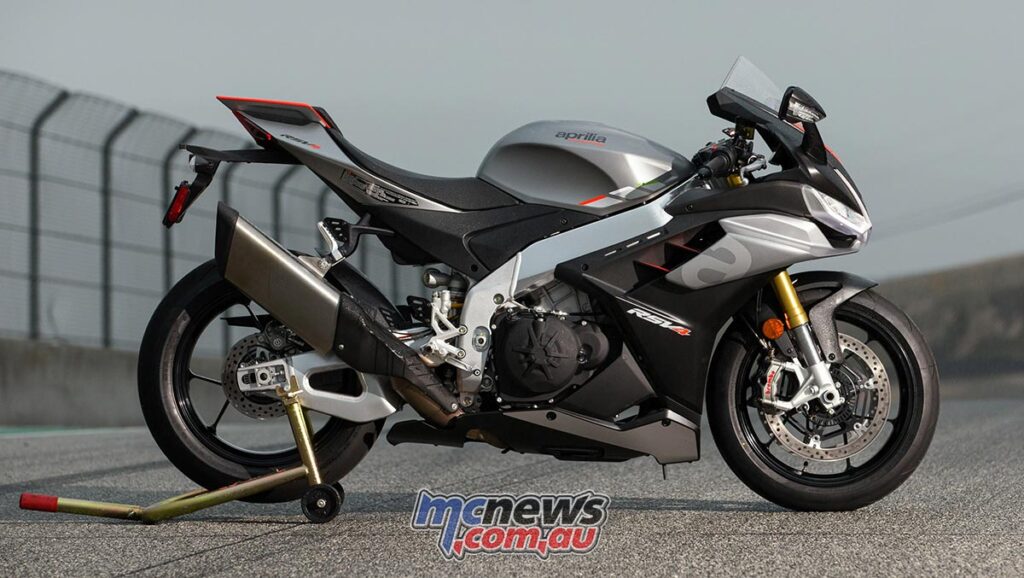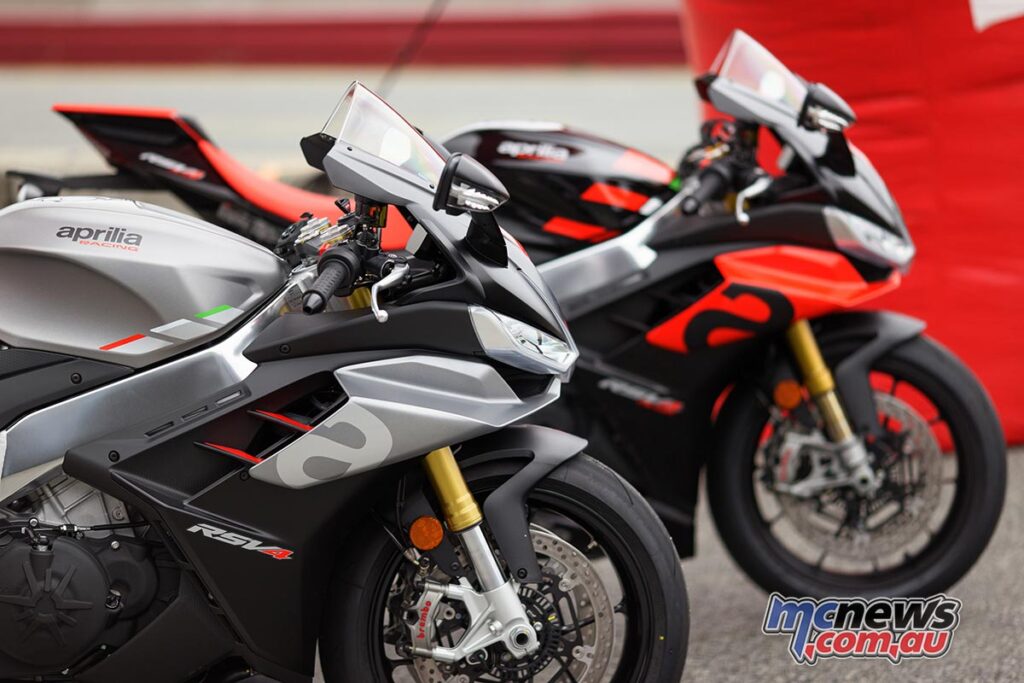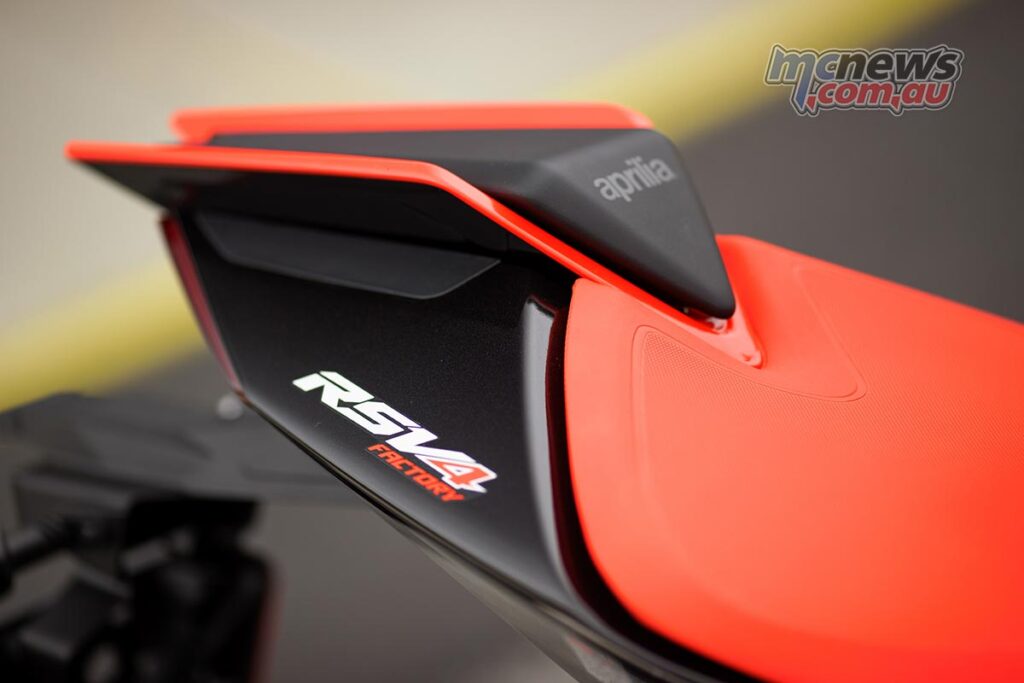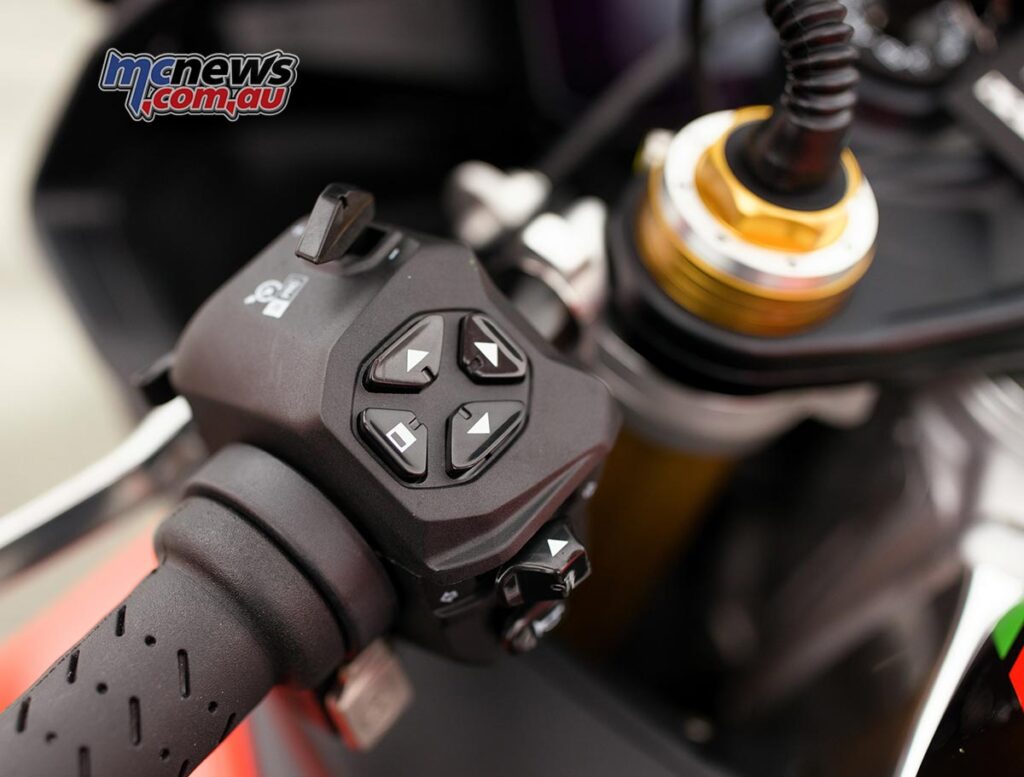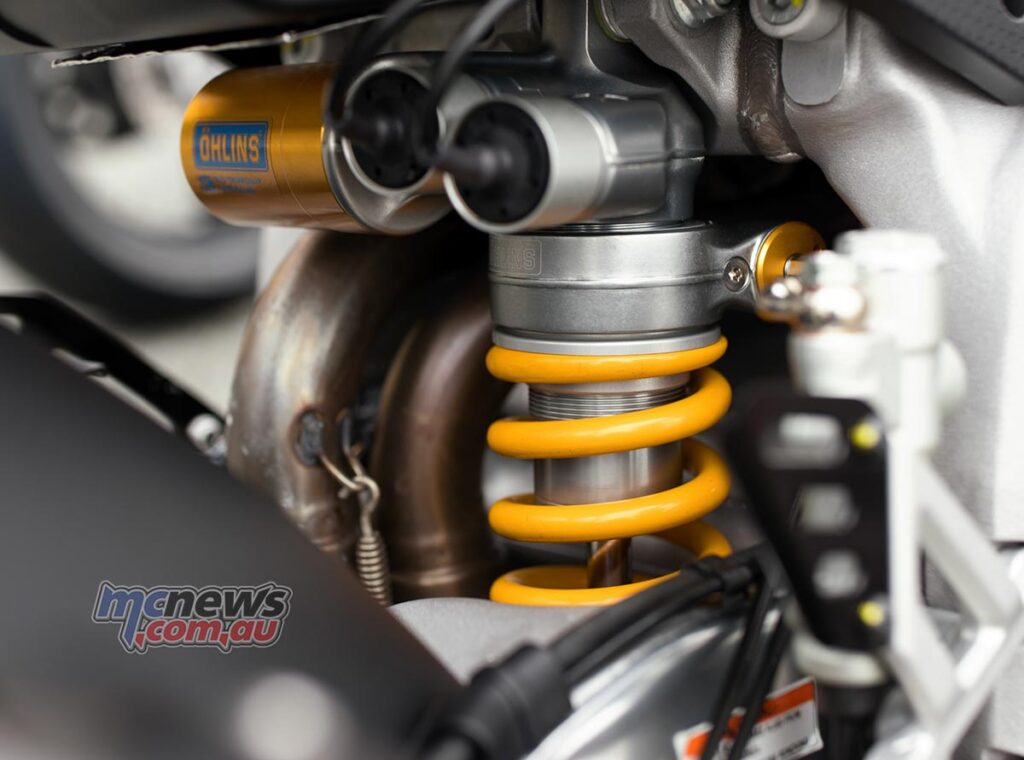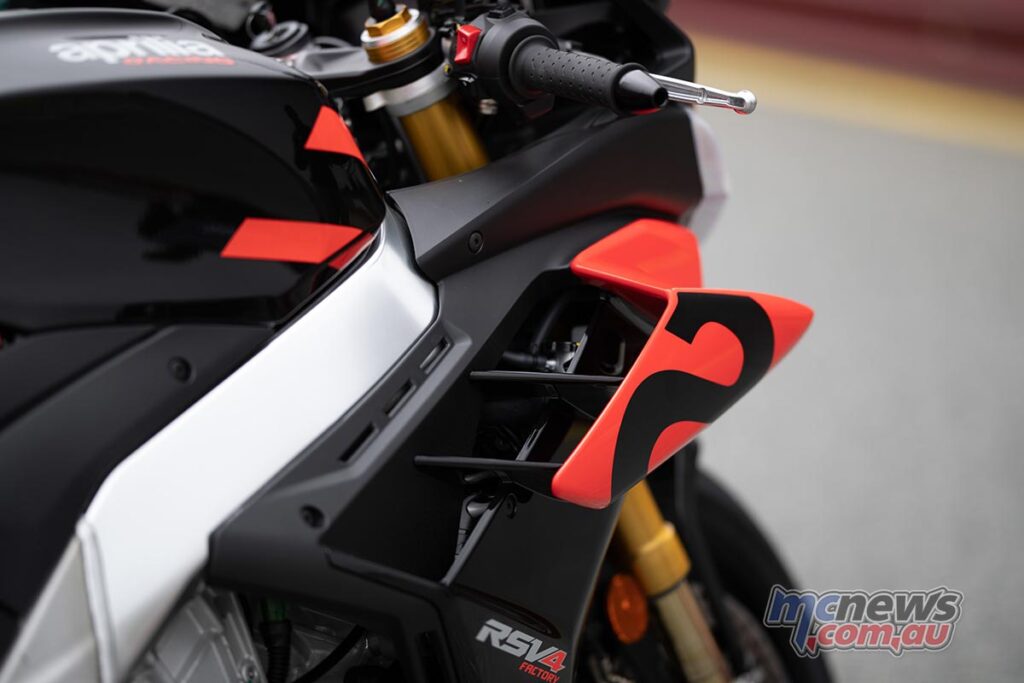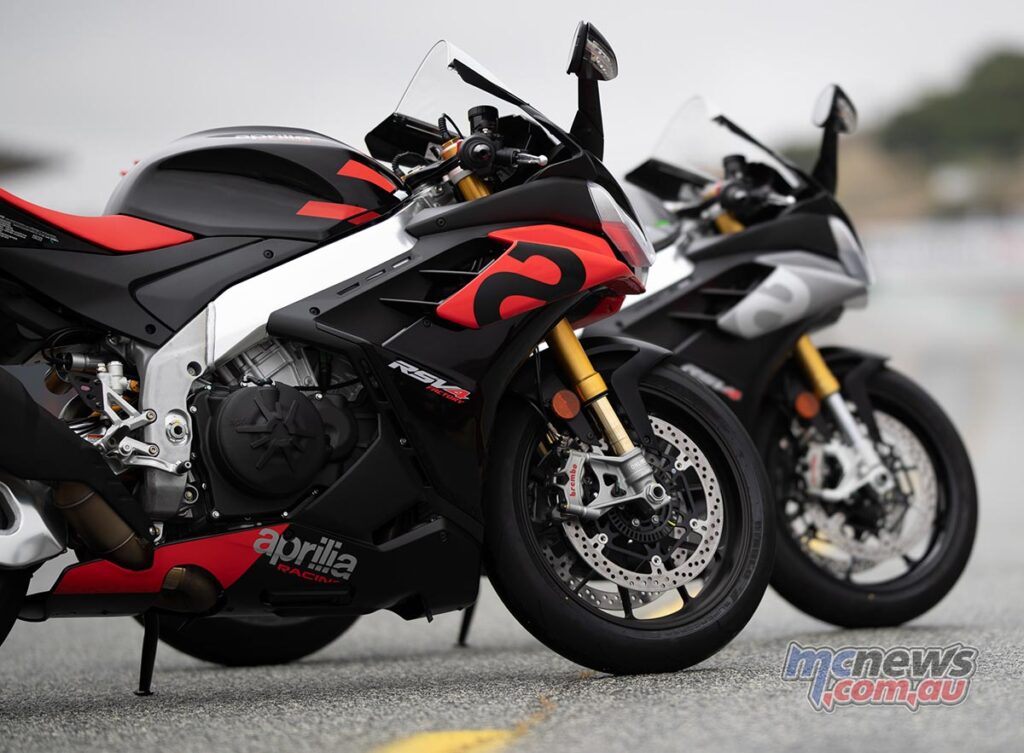2021 Aprilia Tuono V4 and Tuono Factory Review
By Rennie Scaysbrook, Photography by Larry Chen
Considering their looks, you could be forgiven for thinking the Aprilia Tuono and Aprilia Tuono Factory are all new motorcycles. However, look closer, and you may be mistaken.
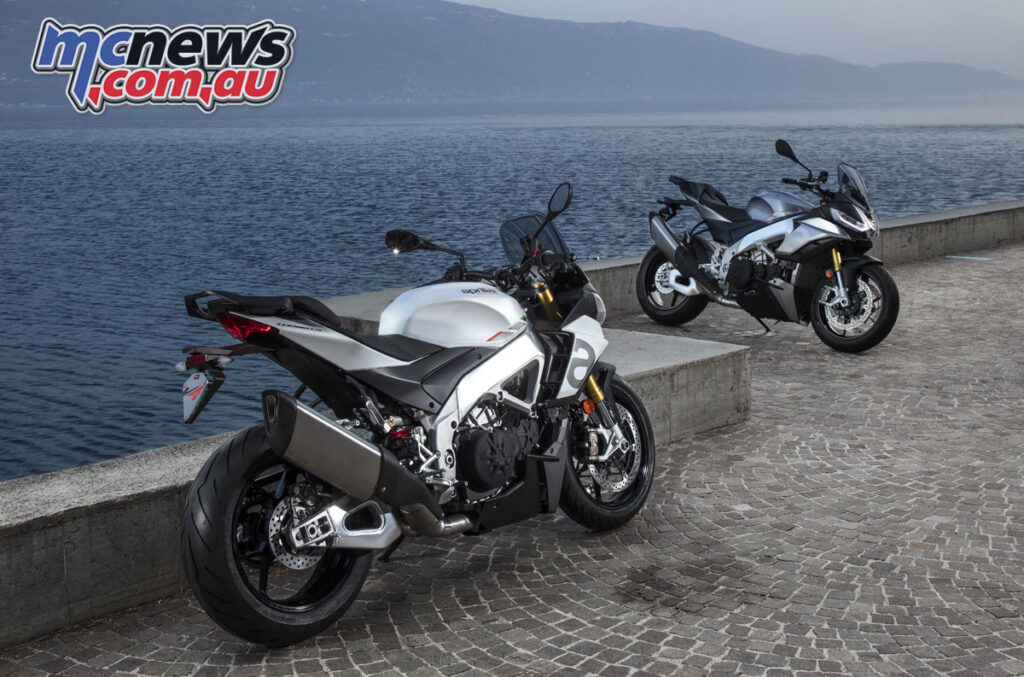
Both machines share a brand new face that finally breaks from the original design we saw over a decade ago, resplendent with LED lighting and fancy inboard winglets down the sides near the radiator. And there’s the same swingarm from the RSV4 that was a new addition for 2021, lauded for its extra rigidity that we loved when testing the superbike at Laguna Seca earlier this year.
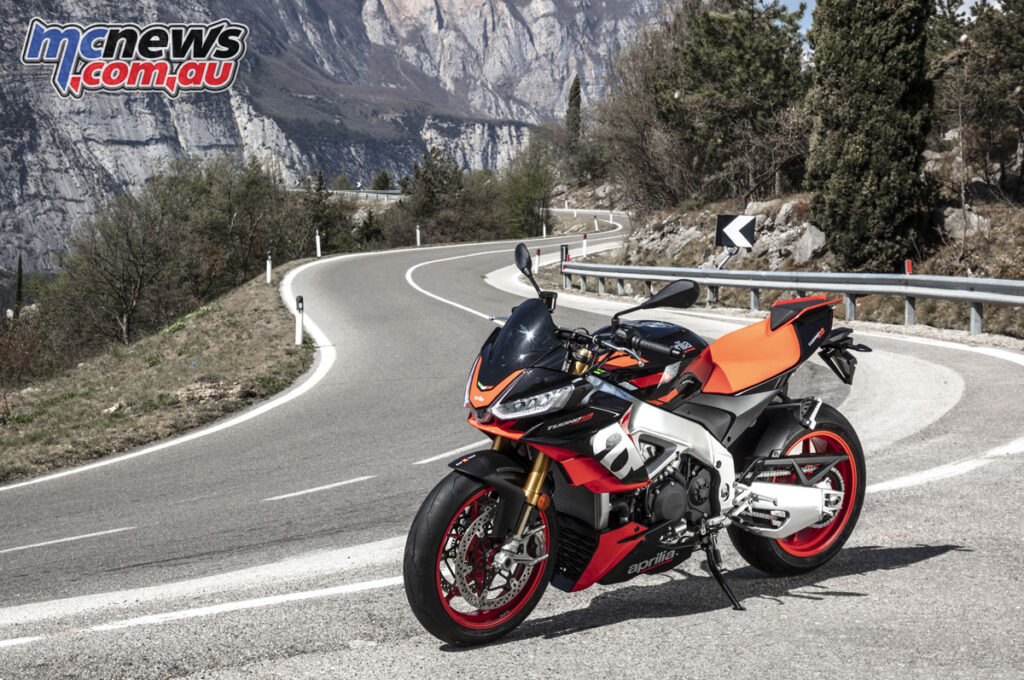
But the big news is the base model Tuono is no longer just a watered-down version of the Factory. It’s a proper model in its own right, going after a chunk of the market currently occupied by machines like the BMW S 1000 XR and KTM 1290 Super Duke GT.
This is something Aprilia should have done years go. And it’s not just me saying that.
Traditionally, the base model was the bike you bought if you either didn’t have the cash for the Factory, or you wanted a bare-bones machine on which to exploit your modifying dreams. However, for 2021, that’s all changed.
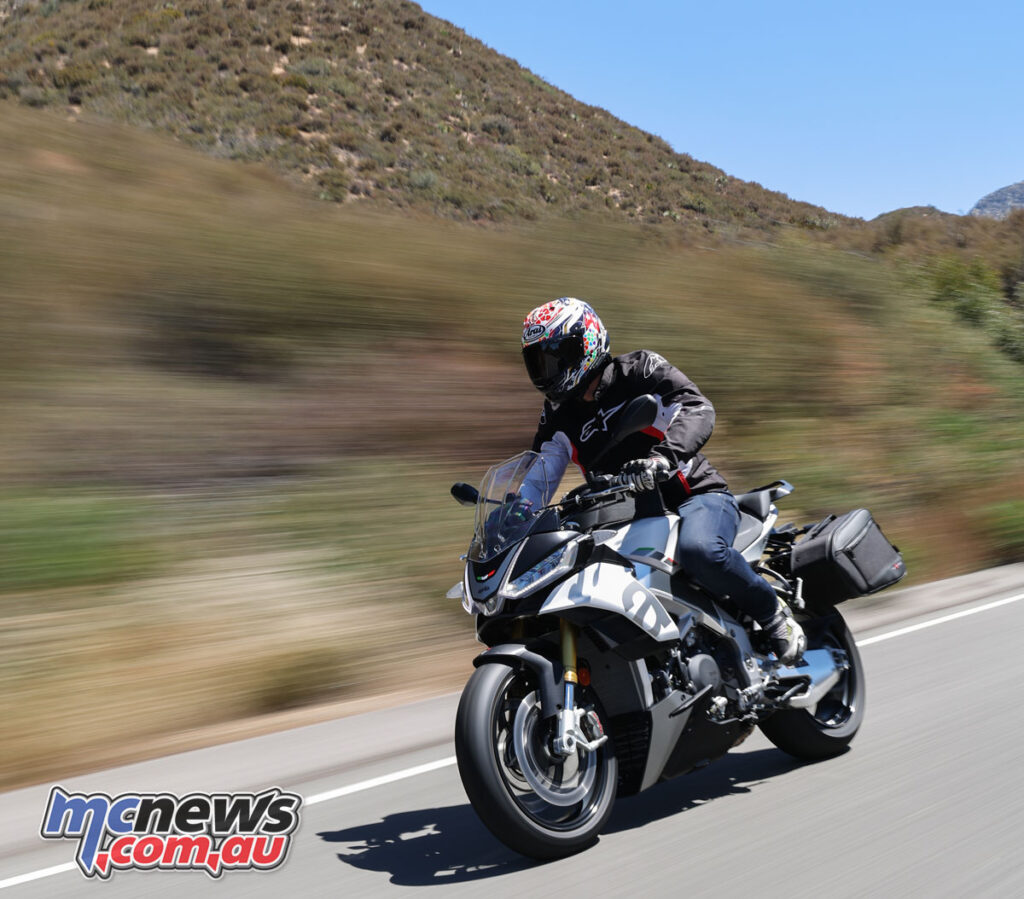
Using the same motor and twin-spar chassis as the Factory, the base model Tuono gets 20 mm higher-set handlebars, a new subframe with a wider passenger seat and lower footpegs, new luggage options like side and tank bags, and a taller windscreen. These choice improvements have shifted the model’s focus into the sporty sports-touring segment, and it’s not a moment too soon.
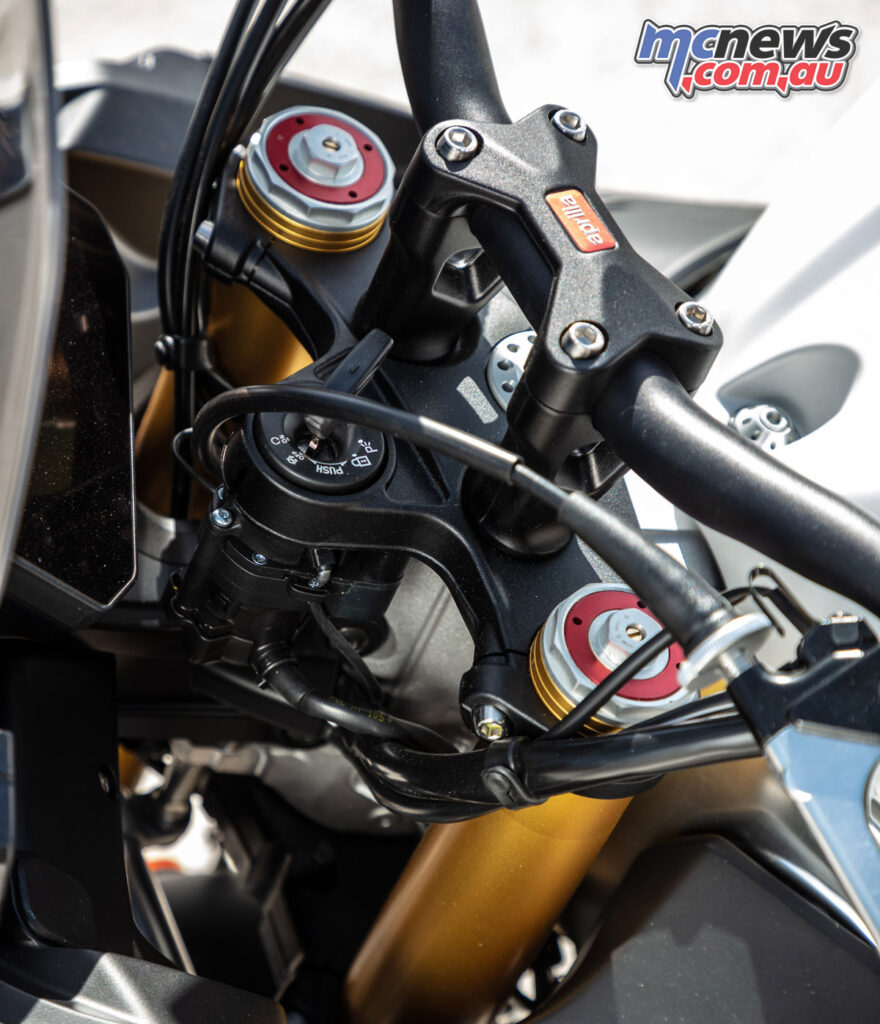
Unfortunately, the base model also gets blander colors than the red/black the Tuono Factory gets. Still, fitted to the touring model (we’re calling it that from now on), is the conventionally-adjusted, fully-adjustable, Sachs suspension, while rubber is the Pirelli Rosso Corsa III tire.
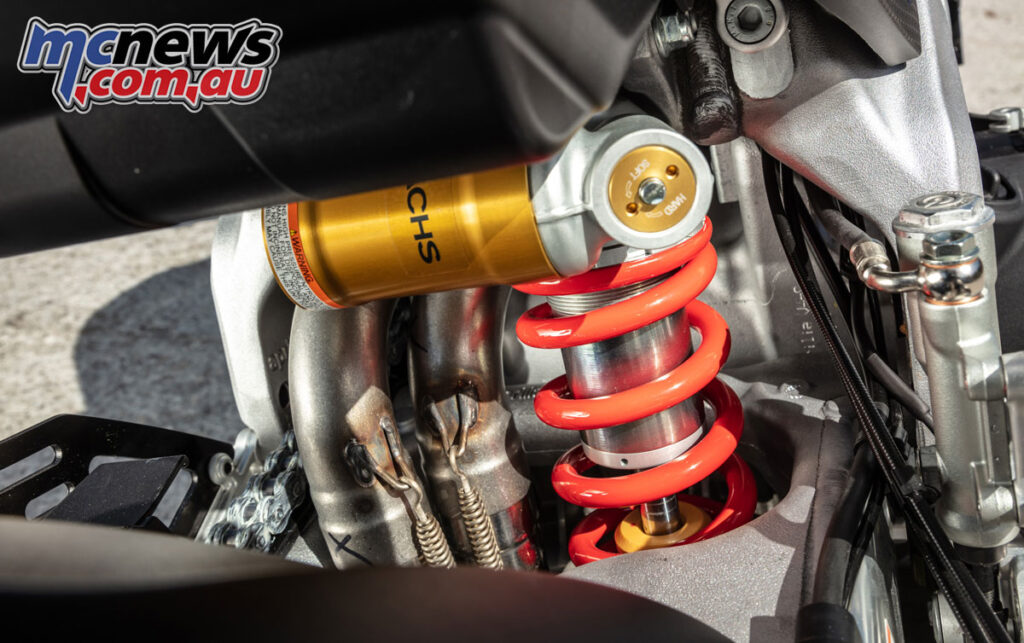
Yet, the Tuono platform really isn’t that different when you strip the bodywork and suspension away and reveal what’s inside. Over the years, each Aprilia Tuono model, aside from when it grew from a twin to a four-cylinder nakedbike, has never been a revolutionary upgrade. Rather, they’ve been concerted, thought out improvements, delivered every few years to keep the Tuono models at the head of the nakedbike pack.
It’s been this way because Aprilia nailed the four-cylinder Tuono so god damn well when they first bought it out in 2011 that they’ve never had to reinvent the wheel. Instead, they’ve just given it a spit and polish.
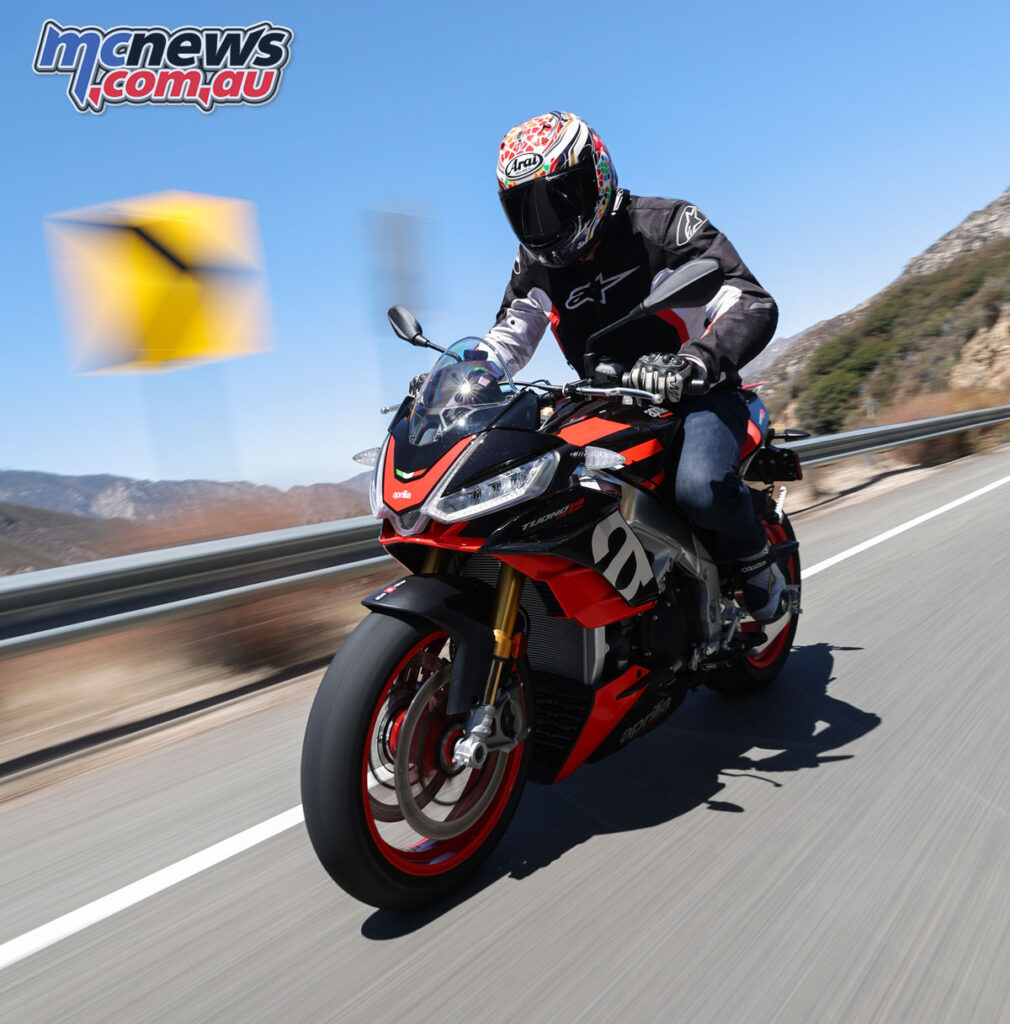
The Factory is still the king daddy of the Tuono range and thus gets plenty of the fruit not found on the base model. There’s semi-active Ohlins Smart EC 2.0 suspension, a short, tinted windscreen, the razor-sharp RSV4 tail section and passenger footpeg set-up, racier colors more like what we used to see on the WorldSBK grid, a polished frame finish, and track-specific Pirelli Diablo Supercorsa SP rubber.
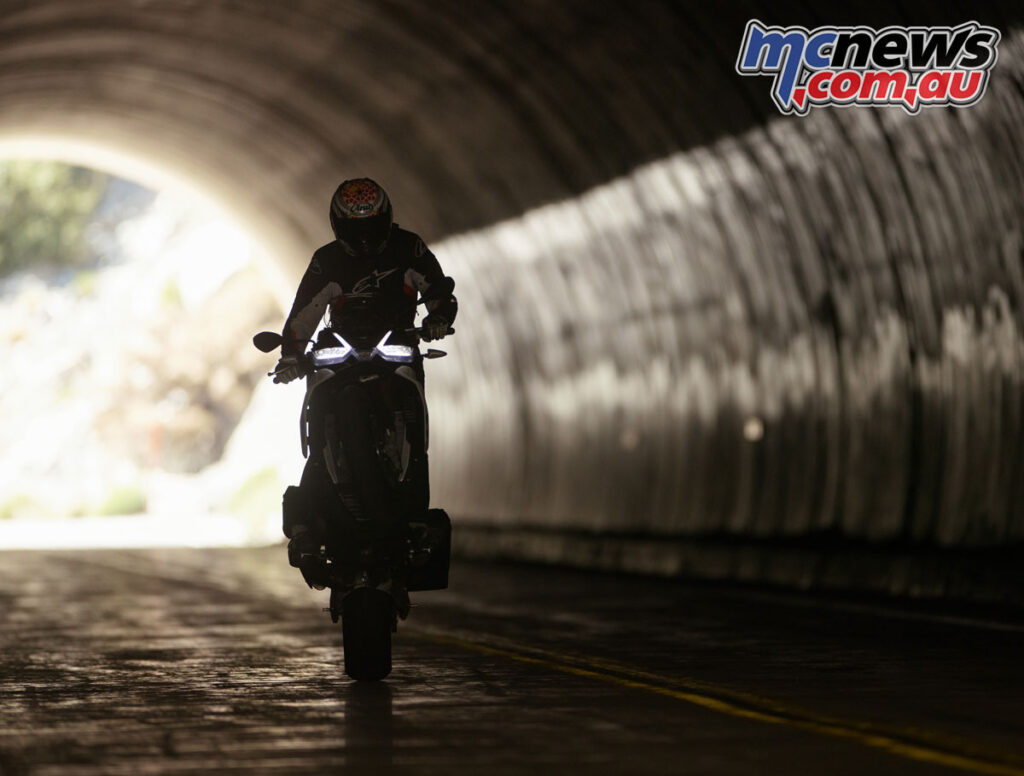
Aside from that, the spec’ sheet between the two bikes remain pretty much the same. That beloved, 1077 cc, 175 hp V4 remains largely unchanged except it now comes with Euro 5 compliance. This has given the Tuono a touch of flat spotted-ness in the mid-range but considering how badly the noise and pollution regulations hurt modern performance engines, Aprilia has navigated this maze well and given the rider plenty of performance for the payment.
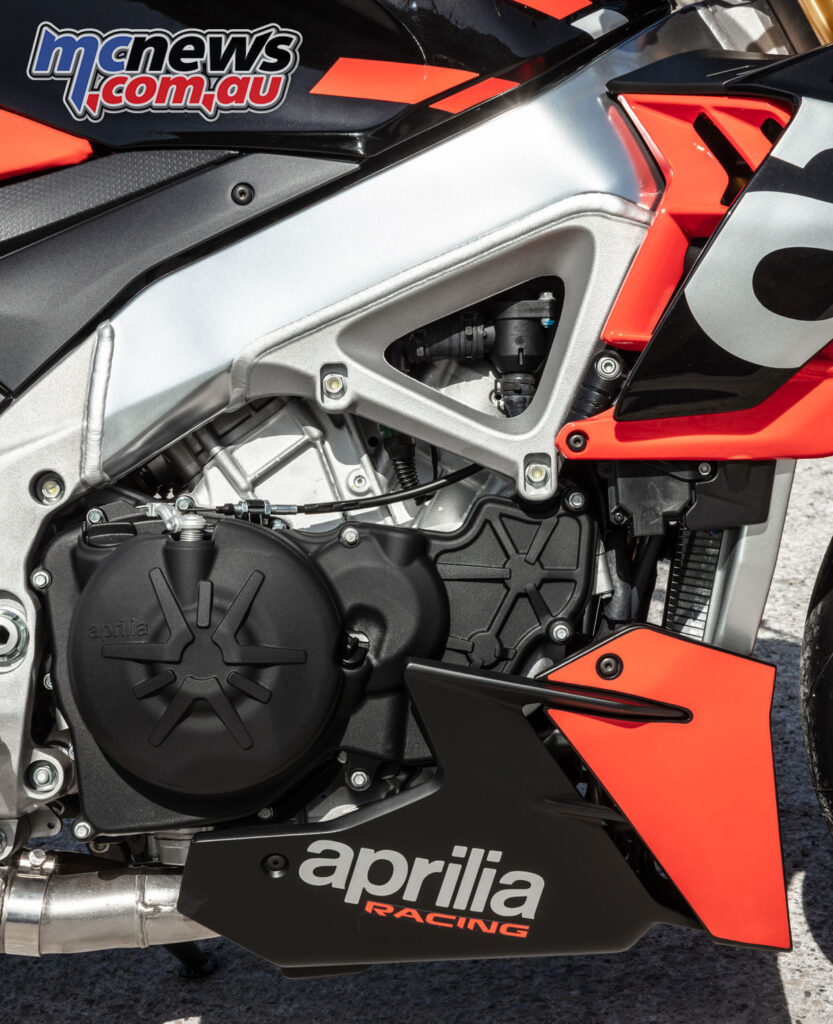
The motor’s performance is mitigated by six riding modes (three for the road, three for the track, including one programable road mode and two programable track modes), cruise control, three-stage engine brake, ABS, launch control and power modes, eight stage traction control, six stage wheelie control and turn-by-turn navigation accessed by a new mission control switchblock on the left handlebar.
The dash is part of the revamp we first saw back with the RS 660 and later the new RSV4 – a pretty bland design if we do say so – but it’s easy to navigate and use, which is number one in my book.
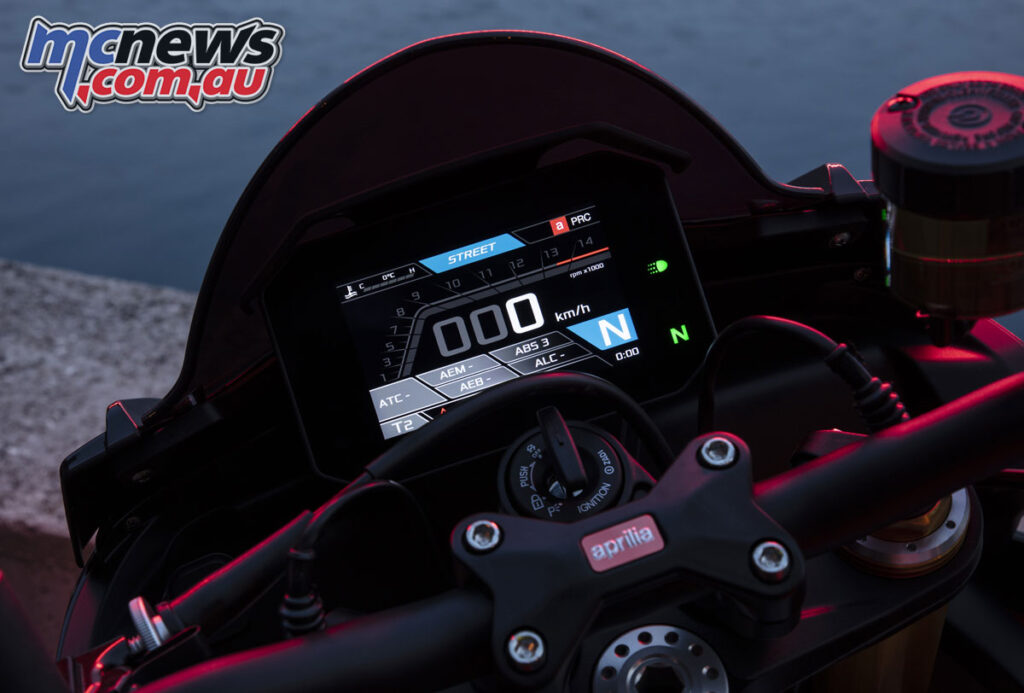
The electronics deserve special mention because they’re powered by the new Marelli ECU 11MP, which has a four-times faster clock frequency and four-times the amount of memory than last year.
Via information fed by the six-axis Inertial Measurement Unit, the ECU can now calculate the happenings of the motorcycle much faster than before. For example, trail braking with the Cornering ABS kicking and while monitoring traction control and engine brake level. It’s not like it couldn’t do this stuff before – it could – it just does it faster and more accurately now.
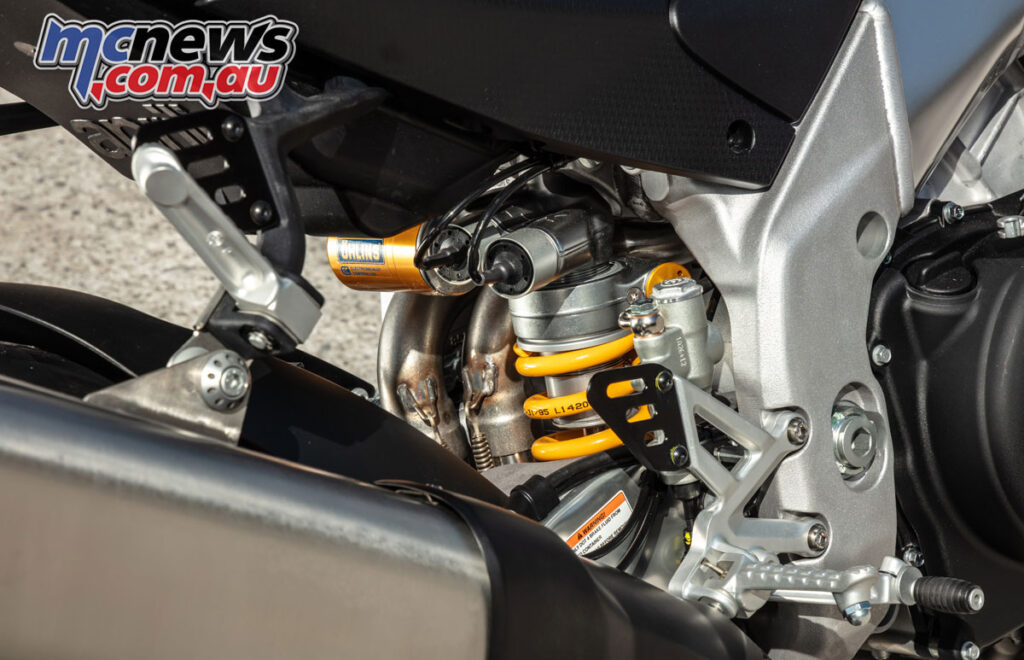
Having ridden many thousands of road kilometres on the Tuono V4 Factory, I can tell you the feeling from the hot-seat is eerily similar to what it was in 2020. The Factory gets that outstanding Ohlins Smart EC 2.0 suspension for the 43 mm NIX fork/TTX 36 shock, and the feeling at the bar is one of total connectedness to what’s happening around you.
If you’ve never used the Ohlins Smart system before, it can be a little confusing, with (in automatic level) no compression/rebound adjustment. It’s all done according to what you want at any given point of the ride. Need more support under braking? Dial in Brake Support.
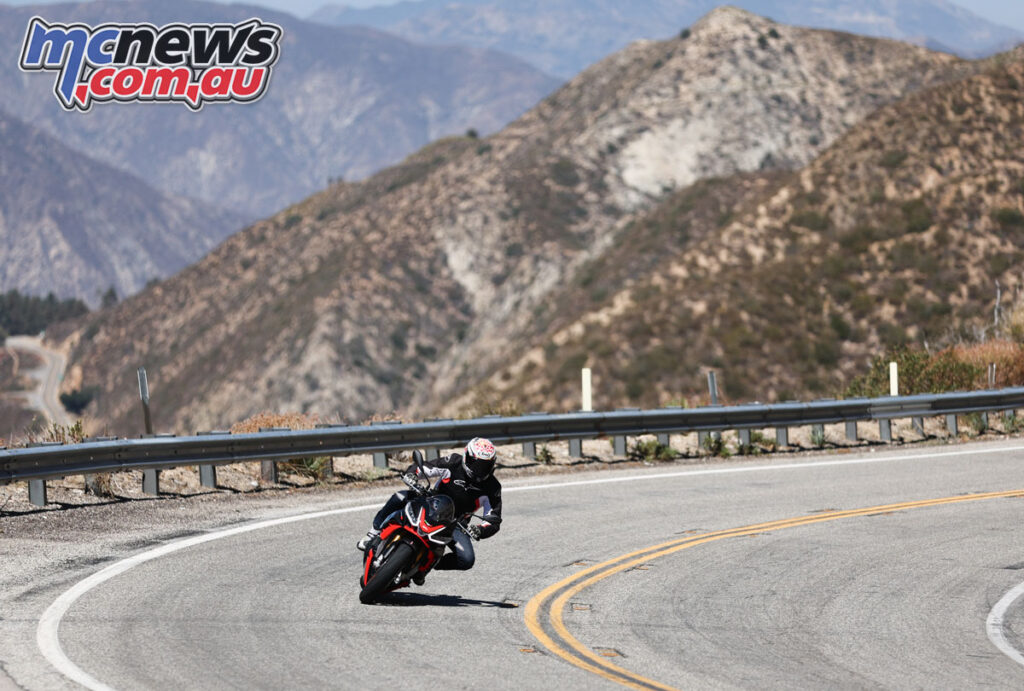
Conversely, if the Tuono is squatting too much under acceleration, dial in Acceleration Support. The result is you can easily tune the ride to exactly how you want, making the Tuono’s ferocious nature a little less intimidating.
Riding up Angeles Crest just east of Los Angeles, the roads are crappy at best, so I left the Tuono in the softest automatic setting and was more than happy to leave it there. Even on its softest setting, the Tuono V4 Factory is god’s gift to road apexes. You simply need to look where you want to go and the Tuono will take you there, slicing its way up your favourite mountain road like child’s play.
If you start jacking the suspension stiffness up via the dash the ride can get a bit on the rough side – the track settings really are only good for when you’re absolutely hammering/on the track, otherwise it’s your bum that’ll take the hammering.
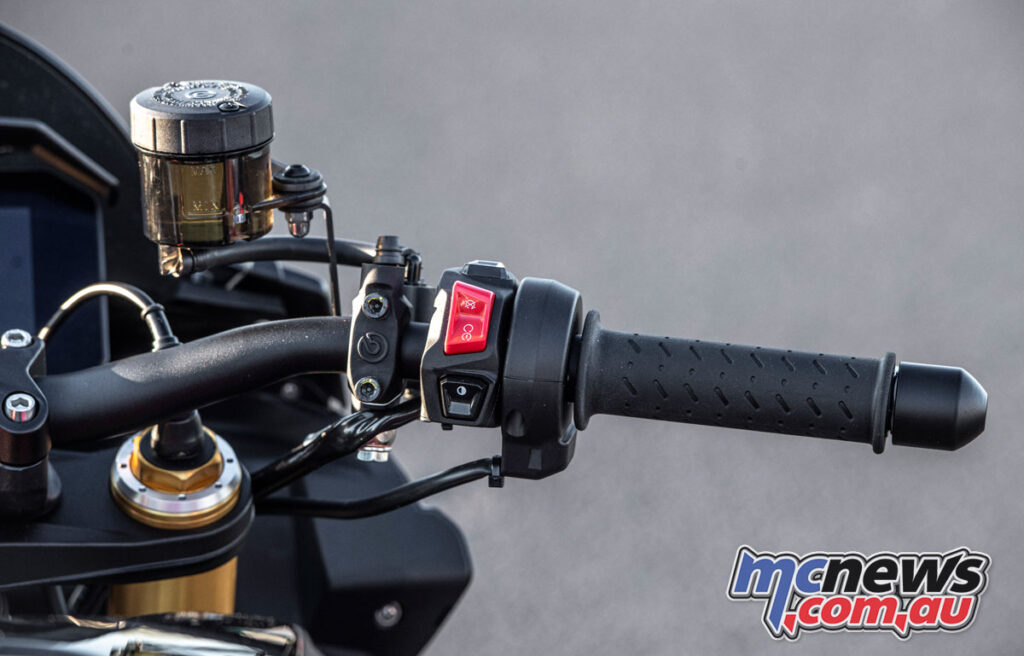
Aprilia’s done well to smooth out the initial throttle response with the new electronics when in the most direct mode. Chassis balance is always maintained when cranked over and you dial in increments of throttle – an important factor given there’s a claimed 175 hp on tap.
Despite that massive number, the Tuono can be a real pussycat in the city. You’re not faced with a one dimensional machine here. The Tuono V4 Factory can do pretty much everything you ask, except this time it’s the base model which it cannot trump. I know, I’m shocked to say that, too.
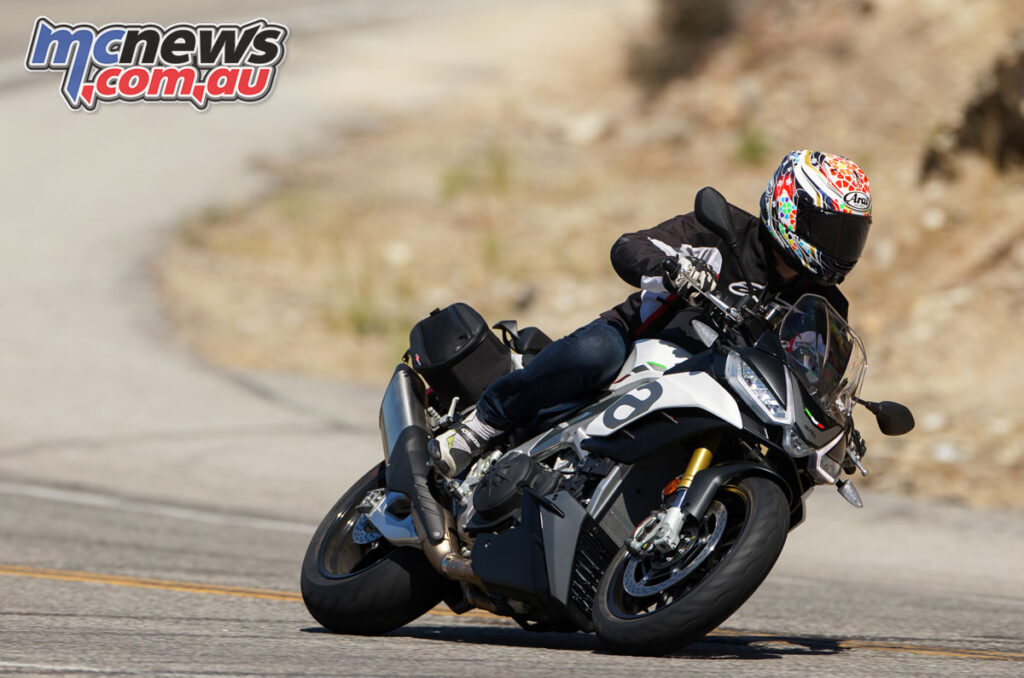
Switching to the Tuono V4, this is where Aprilia have really hit a six. Taking almost all the good bits of the Factory and none of the bad, the Touring Tuono is a comfier, plusher, more usable machine that most road riders need.
I absolutely abhor the term “real-world”, but the touring model is much more applicable to everyday situations. In this instance, I find it a shame that Aprilia did not grace that base model Tuono with saddle bags as standard, given its undoubted touring prowess.
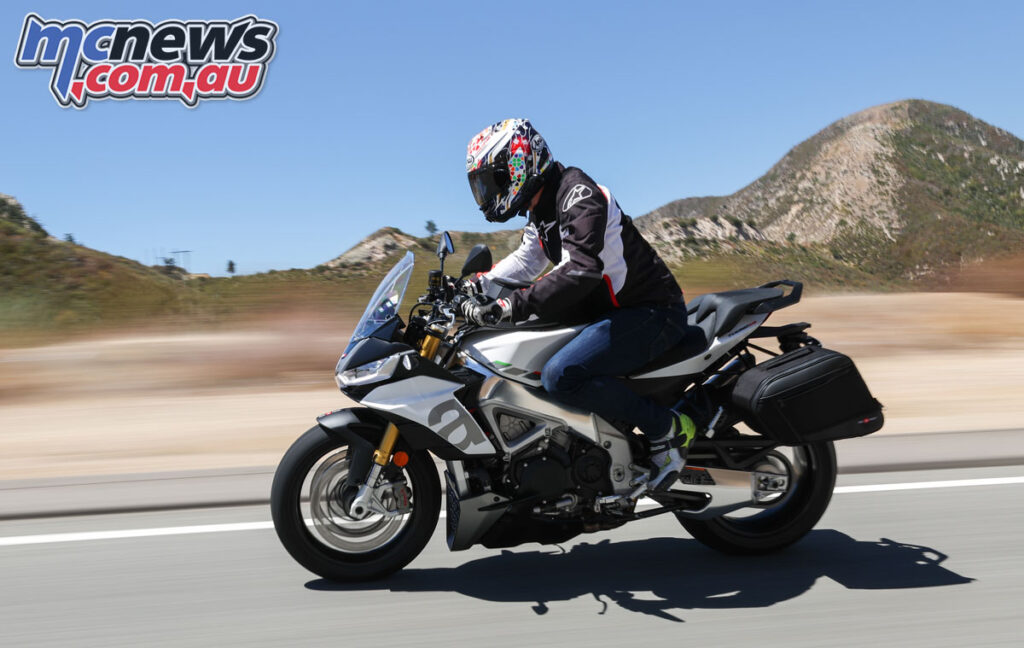
Still, the higher set handlebars and taller windscreen make for a more pleasant and relaxed ride than what you’ll get on the Factory, which is as much a stripped nakedbike as you can get. The base model still gets the 175 hp and same frame, so you’re really not missing out on much, aside from the electronic suspension.
But here’s the good news. The Sachs suspension is a brilliant piece of kit. Just like it is on the base mode RSV4, the Sachs suspension is all most riders will need. Yes, having electronic adjustment is a fancy tool in the box, but conventionally adjusted suspension is still king in my book and the fact Sachs has been on an upward curve in the last few years only adds weight to the argument.
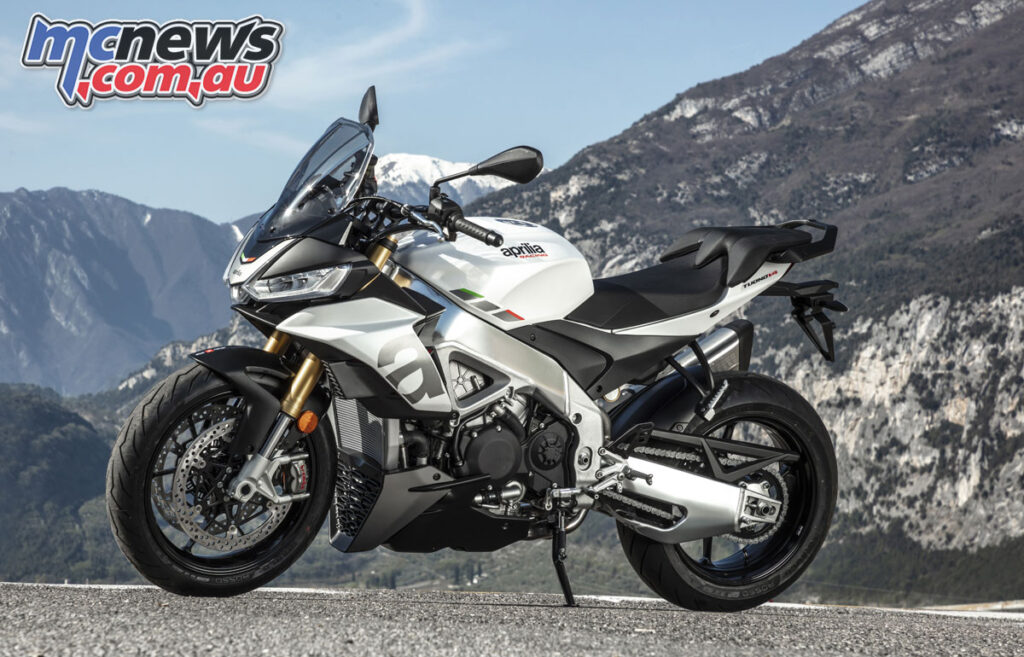
On the road, the Sachs suspension is a little stiffer than the Ohlins but bump absorption is nothing to complain about, neither is the side of the tyre feel. You can bank the base model in with the same confidence as the Factory, albeit in better comfort. This is especially so if you’re under 176 cm tall, as the windshield cut off point should enable the wind to sail right over your helmet, rather than buffet your forehead to bits like on something like the BMW S 1000 XR.
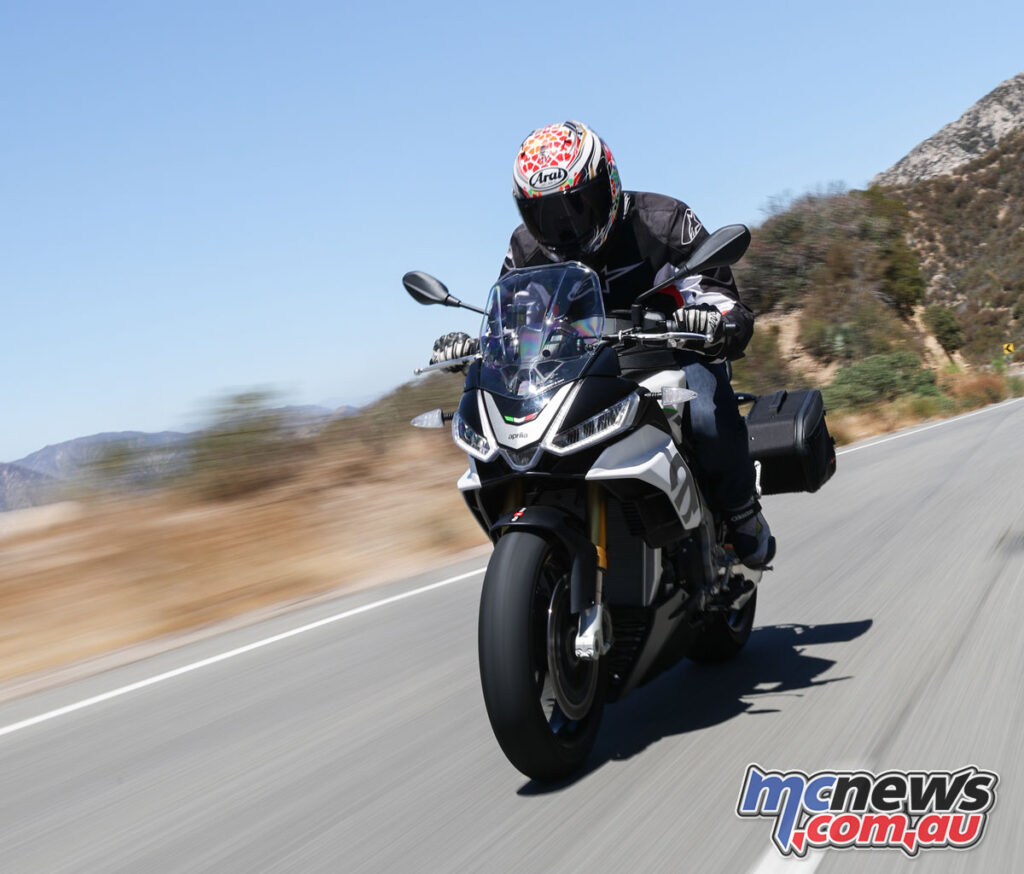
Both models are prime examples of the best of nakedbiking, and being a hot-head I’ll always go for the Factory. But I cannot hide my enthusiasm for the new base model. This is the move Aprilia should have made when the V4 first came out, in which case they would have trumped BMW and KTM by years.
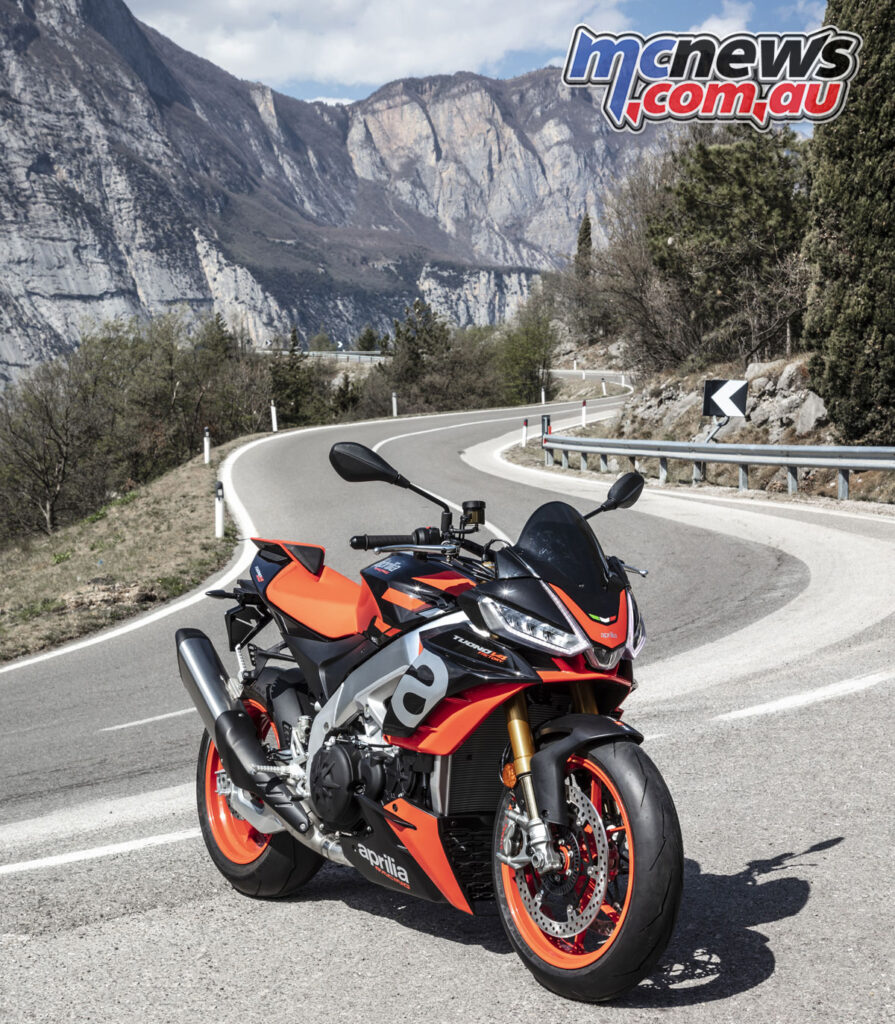
Oh well, never mind, it’s here now. And although the Factory is and always will be the king dong as far as Aprilia Tuono nakedbikes are concerned, it’s the base model I’ll be raving about when the pubs eventually reopen. And at $28,030 ride away, the few grand you save over the Factory will buy you plenty of beers!
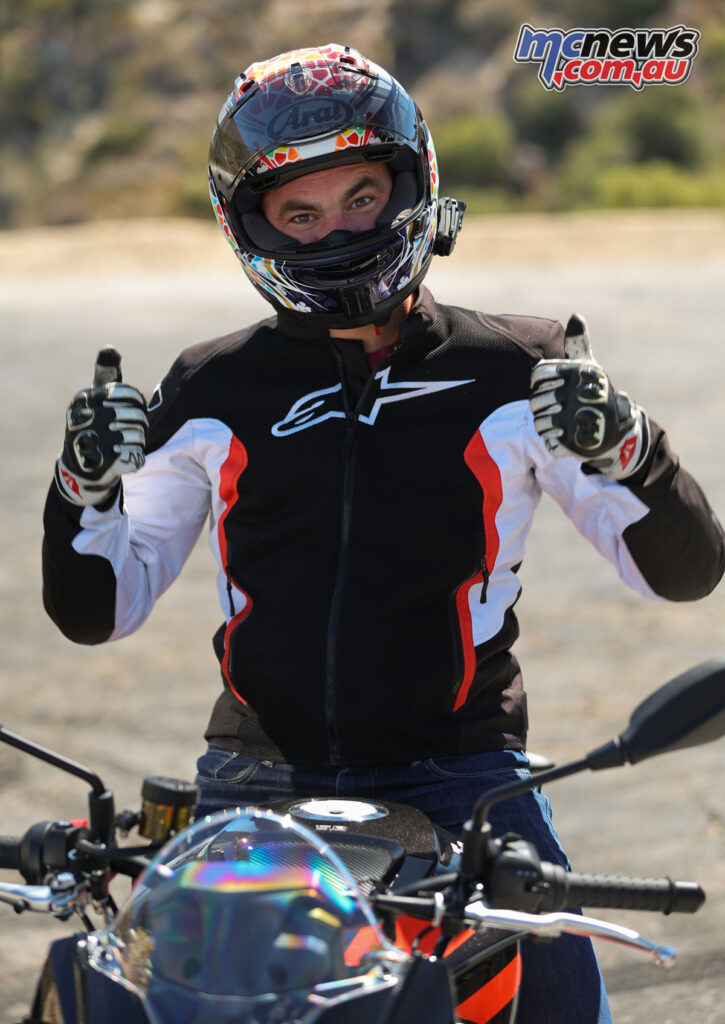
2021 Aprilia Tuono V4 1100 Specifications
Source: MCNews.com.au

